







H O RIZ O N S PROFESSIONAL DEVELOPMENT IN OUTDOOR LEARNING CATCH UP WITH MORE RESEARCH INSIGHTS FUNDED BY IOL (p.27) PLUS MORE A PICTURE OF OUTDOOR LEARNING PARTICIPATION Why technology in the outdoors should not be the elephant in the room (p.12) ISSN 2634-8799 ISSUE 99 AUTUMN 2022 PRINT? DIGITAL? BOTH? LET US KNOW WHAT YOU WANT FROM HORIZONS (p.41) HAVE YOUR SAY ON THE FUTURE OF HORIZONS YOUNG PEOPLE JUST WANT TO TALK ABOUT IT!
HORIZONS
WRITE AN ARTICLE
Content for publication is always welcome and should be emailed to the Editor. The Editor will attempt to return all unsolicited material but cannot accept responsibility for it. Please read the contributor guidelines before submitting content: click here.
COPYRIGHT of the magazine as a publication is vested in the Editor. Copyright of articles remains with the individual authors who will receive a copy of their article. Reproduction in whole or in part is forbidden without the express permission of the Editor, who is normally happy to grant requests for educational purposes. Opinions shared in articles are not necessarily shared by the Editor, Editorial panel or IOL.
ADVERTISE
Contact Fiona Exon at IOL for information: fiona@outdoor-learning.org For additional details click here. Advertisers retain copyright for their adverts. Adverts shared in this magazine do not represent endorsement by the Editor, Editorial panel or IOL.
JOIN OUR EDITORIAL PANEL
Having a specialist panel means we have a wealth of experience in different types of Outdoor Learning at our finger tips. This helps ensure the stories we publish are up-to-date, well structured and useful to our readers.
If you’re interested in joining our specialist panel, go to: www.outdoor-learning.org/Good-Practice/Research-Resources/ Horizons-Magazine/Horizons-About-The-Panel
ISSUE CREDITS

DESIGN PROOFREADING Catherine Dunn Jack Reed
PANEL
Thank you to the Horizons panel for their continued support and contributions. Geoff Cooper Colin Wood Suzie Dick Liam Scott Di Collins Jack Reed Sam Moore Ian Healey
IMAGES
Front cover: main cover image has been sourced from www.pxhere.com. Editorial images have been sourced from www.pxhere.com. Photographers retain copyright.
INSTITUTE FOR OUTDOOR LEARNING
The Institute for Outdoor Learning (IOL) champions safe activities and effective learning in the outdoors. We are a professional membership institute working towards an application for a Royal Charter.


Learn about IOL and how to become a member: www.outdoor-learning.org
HORIZONS OFFICE
IOL, Warwick Mill Business Centre, Warwick Bridge, Carlisle, Cumbria, CA4 8RR. T: 01228 564580 F: 01228 564581 E: fiona@outdoor-learning.org

1 ISSUE 99 AUTUMN 2022
©2022 Catherine Dunn ISSN 2634-8799
Helloeveryone! I’m Catherine, the new Editor of Horizons. I’m very excited to be taking on this wonderful magazine which has proved such a vital place for conversation, knowledge sharing and collaboration in outdoor learning. I’d firstly like to thank the outgoing Editor, Dr Carmen Byrne, for all her work on the magazine over the last four years (including those Covid years).
When I first came into the world of outdoor learning 5 years ago I had not heard of Horizons. But ever since then I have heard colleagues and friends speak very fondly of the magazine, as if it were an old friend from whom they would seek advice on the world of outdoor learning.
I work primarily in the creative fields of adventure filmmaking and photography with an emphasis on the climate crisis and youth voice. As our world evolves in increasingly complex directions, the human relationship with the natural environment is undergoing complex changes and developments; technology, environmental degredation and cost of living are all having increasingly broad impacts on how we interact with the outdoors. Moving forwards, Horizons will seek to unravel some of these complexities and work out where/how the outdoor learning sector can best serve its learners.
welcome!
In this issue, we start to tackle some of the big issues borne out of the Covid pandemic - Jack Reed kicks off a brand new series on technology in outdoor learning (p.12), while Luke Blackham presents bushcraft as an alternative mental health and wellbeing service for young people (p.15). Jenni Myers reconceptualises ‘nature’ and prompts us to think differently about the language we use when referring to the outdoors in residential outdoor learning (p.23).
Martin Barry then offers some creative solutions to a practical problem you may face in a winter environment (p.31), while Paul Ritchie rounds off the issue with some autumnal activities and wildlife spots in Nature Notes (p.37)
You may notice a few changes in Horizons over the coming issues, but we’re committed to ensuring everything we do is informed by our readership - so let us know what you want from Horizons by filling out our survey in Viewpoint (p.40).
Enjoy the beautiful colours of Autumn and keep your eyes peeled for our 100th issues celebration early next year.
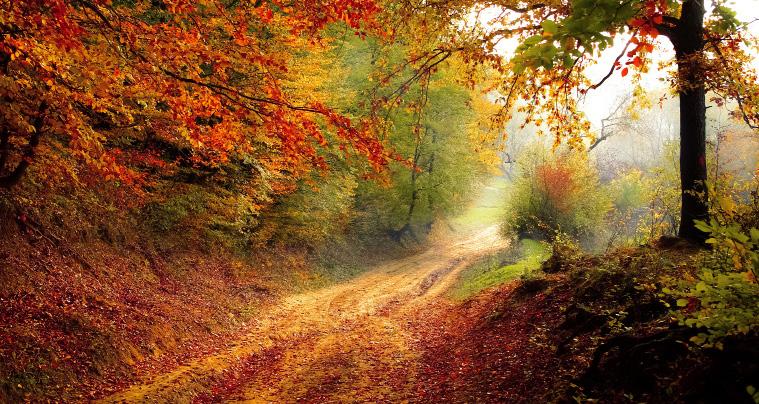


SHARE YOUR STORIES
Horizons looks to share different perspectives, ideas and good practice from across the Outdoor Learning sector.

We’re always interested in hearing about your experiences and ideas for features.
Look at our writer’s guidelines, and then have a go at writing an article: click here for details.
 EDITOR Catherine Dunn
EDITOR Catherine Dunn
I’d love to hear from you with ideas for articles, stories or ideas that you would like us to explore in the world of outdoor learning horizonseditor@outdoor-learning.org
ISSUE 99 AUTUMN 2022 2v
NEXT CONTENTS>
SCANNING THE HORIZON
Find out what’s new in the world of Outdoor Learning
(PAGE 5-7)
NEW SERIES
MEMBER SPOTLIGHT
TOP TIPS FOR EVALUATION

The Ernest Cooke Trust offer ten ways to create more effective evaluation.


By Rosie Tudor.
(PAGE 8-10)
YOUNG PEOPLE JUST WANT TO TALK ABOUT IT!
First in a four-part series exploring the impacts of digital technology on out door residential learning. Based on PhD insights, this first article suggests that technology should not be seen as the elephant in the room.

By Jack Reed
(PAGE 12-14)
LIGHTING THE FIRE

An in-depth look at how the outdoors could be used as an alternative service for mental health and wellbeing.
 By Luke Blackham
By Luke Blackham
(PAGE 15-18)
LEARNING BY LEADING
Dive into a leadership programme delivered at International College Hong Kong and learn how it enriches students’ connection to the local environment.
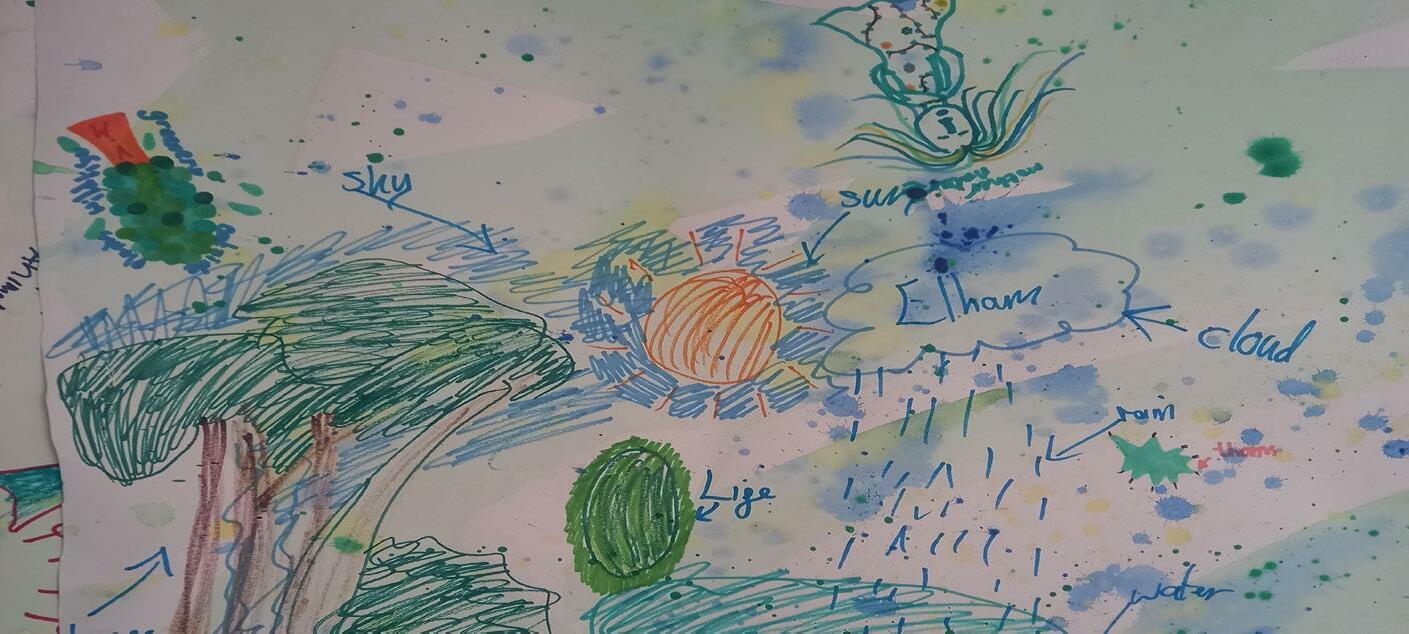
By David Addis & Douglas Kidd
(PAGE 19-22)
3 ISSUE 99 AUTUMN 2022 CONTENTS
THE NATURE FIX

UNDERSTANDING ‘NATURE’
For this
By Jenni Myers
(PAGE
In the
CONTENTS
NEW SERIES
JUMP OVER TO JAEOL
Remember to check out the latest Outdoor Learning research at the Journal of Adventure Education and Outdoor Learning (JAEOL).
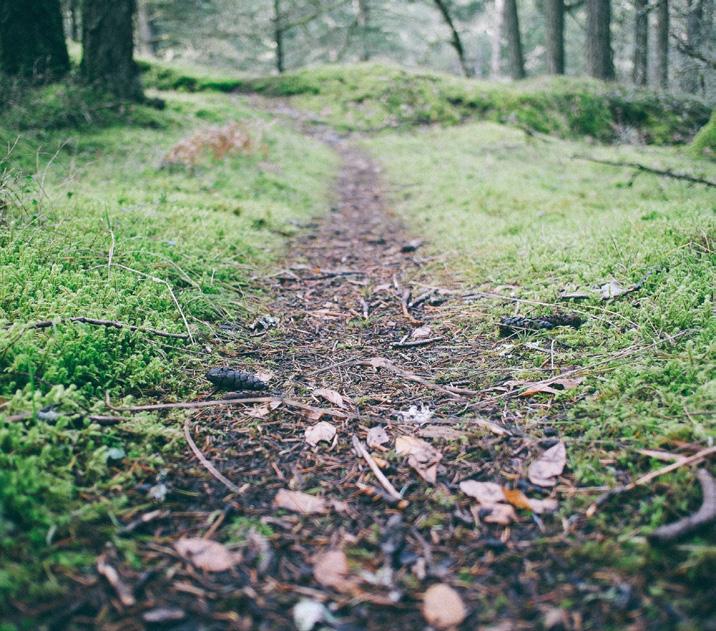

Click here.
article, Jenni
A PICTURE OF OUTDOOR LEARNING PARTICIPATION
Second
By Dave Harvey
(PAGE

DECISION TIME
The
 By Loel
By Loel
NATURE NOTES
Wildlife
OF AUTUMN
DANCING IN THE WIND
Creative
By Martin Barry
By Paul Ritchie
VIEWPOINT

Have
HAVE YOUR SAY ON THE FUTURE OF HORIZONS



Tell
See page
ISSUE 99 AUTUMN 2022 4
brand new series, Jenni explores the effectivesness of outdoor learning for all learners.
opening
unpacks traditional conceptualisations of ‘nature’ and examines why we may need an alternative.
23-26)
solutions to practical problems.
(PAGE 31-33)
us what you want to see from Horizons.
41.
COLOURS
tips for centres, schools, parks and gardens
(PAGE 37-40)
your say on the future of Horizons as we kick off the debate on whether the magazine should return to print... (PAGE 41-42)
in a series of articles sharing IOL-funded PhD research insights. This article focusses on outdoor learning participation.
27-30)
first of a two part series on developing professional judgement and decision making.
Collins (PAGE 33-36)
SCANNING THE HORIZON
NEWS AND UPDATES FROM THE WORLD OF OUTDOOR LEARNING
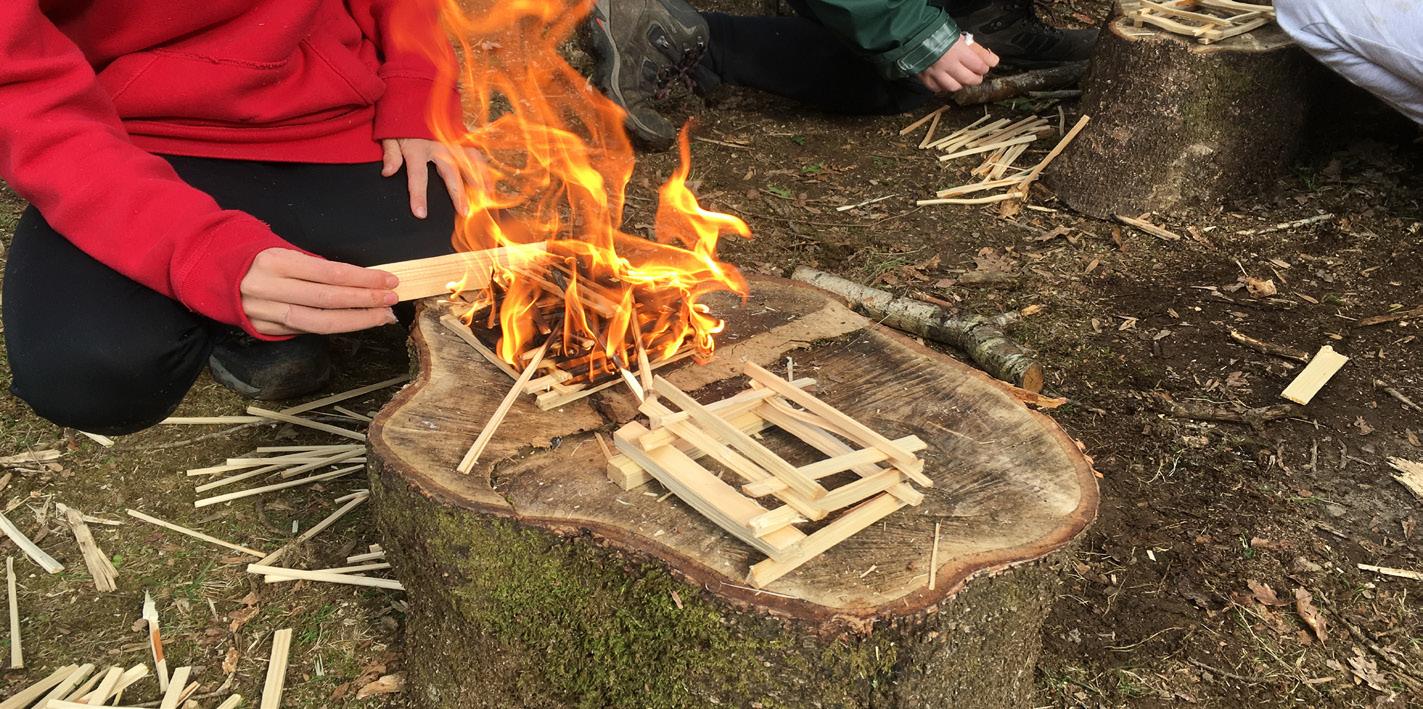
RESIDENTIAL OUTDOOR EDUCATION FOR ALL SCHOOL STUDENTS IN WALES
IOL AUTUMN WEBINAR SERIES

We’re pleased to offer a new series of member-only webinars. These are online and easy to access through Zoom. The main theme for Autumn 2022 is ‘Alternative Provision’. In its strictest sense, this is education arranged by local authorities:
• for pupils who, because of exclusion, illness or other reasons, would not otherwise receive suitable education
• education arranged by schools for pupils on a fixed period exclusion, and
• for pupils being directed by schools to off-site provision to improve their behaviour.
In these sessions we’ll explore outdoor learning approaches which are being used as positive interventions to help children and young people with self-esteem, trust and in achieving success for themselves.
On 26th October Senedd Cymru (the Welsh parliament) voted on a proposal for a member’s bill to make an outdoor education residential mandatory for every child and young person at least once in their school career, funded by the Welsh Government. It was fantastic to see our nation’s elected representatives debating the benefits of outdoor education with even the voices against the proposal still acknowledging the benefits. This was not one question answered with a written statement, but a full hour debate with many members of the Senedd speaking (it’s available to watch here). It was clear from the education minister’s answering statement and the Labour members who spoke, that the Welsh Government would oppose the proposal, but in an almost unprecedented occurrence, the rest of the Senedd united to support the proposal and it passed by one vote. This now allows the member who put forward the motion, Sam Rowlands, MS for North Wales, to work with Senedd researchers and staff to develop the proposal into a full bill, to be read and then voted on by the Senedd in around 12 months time. There is clearly a lot of work ahead, but with the media coverage of the vote and the support from so many diverse organisations involved in outdoor learning across Wales, outdoor learning is firmly in the public eye, with an amazing opportunity in front of us. Finally, a note of thanks must go to the individuals and organisations involved in supporting Sam and his team in developing both the proposal and the data to support the debate. In particular the support of the Outdoor Alliance Wales, OEAP Cymru and AHOEC must be acknowledged, and highlighted as a demonstration of the possibilities when we work together as a united sector with one voice.
By Graham French
In the Spring we will be exploring Sustainability and three core principles:

• Reducing our environmental footprint and supporting the move to carbon neutrality in all aspects of operations
• Establishing long term positive behaviour and environmental responsibility through engagement in outdoor learning
• Encouraging the relationship between active environmental engagement and positive mental health and wellbeing We will be sharing IOL funded research and practical applications relevant across our sector.
Other seminars will focus in on practice including: how to look after equipment to prolong its life; the challenges of recruiting and retaining high quality staff in an ever competitive environment; inclusive approaches; and the fundamentals of providing dignified outdoor toileting. For your professional development we are offering specific webinars on the IOL Awards and Apprenticeships – there really is something for everyone, maybe it’s time to invest in YOU.
We will also offer opportunities to engage with the development of the IOL, keeping you both up to date and giving you a chance to contribute – both as individuals and through any specialist sector and/or regional groups.
These are webinars by members for members – so if you would like to make a request for a topic, or offer a webinar, we would love to hear from you. To see the programme and/or book please go to All Events & Courses (outdoor-learning.org).
5 ISSUE 99 AUTUMN 2022
ALTERNATIVE PROVISION
Challenging Behaviour – Mistakes Made & Lessons Learnt.

14 Nov 7pm - 8pm.
The journey of Releasing Potential from being a provider of Alternative Education through to be registered as an Independent Special School. Any mistakes you might have made we have made them (and worse) so let’s discuss. Hosted by Mike King.
Challenging Behaviour - Choice Informed Approach.
21 Nov 7pm to 8pm.
Empowering both the adult and the child in a situation provides better outcomes for all involved. Being able to choose our behaviour has a long term impact and invests in the long term future of the child. Hosted by Mike King.
Challenging Behaviour - Choice Informed Approach.
28 Nov 7pm to 8pm.
What can I do if the behaviour in front of me is unpleasant, threatening and unkind. Equipping the adult to create better outcomes for all concerned. Hosted by Mike King.
Nature Premium.
23 Nov. 7pm to 8pm.
Hosted by Sara Collins and Sarah Lawfull. National Outdoor Learning Award (NOLA).

23 Nov 4.30pm to 5.30pm.
This webinar, delivered by Dr Roger Hopper, the developer of the award, will explore how you can use NOLA in your outdoor learning context. Roger is used to supporting providers apply NOLA in varying contexts: different ages, participant needs, outdoor environments, activities and with single and multiple session programmes. Roger will allow plenty of opportunity for questions. Hosted by Dr. Roger Hopper.
Providing an alternative - a real life example.
6 Dec. 7pm to 8pm.
Alan worked at Arthog OEC in Wales before moving across to Telford to set up the Arthog Outreach provison over 15 years ago. Arthog Outreach brings outdoor activities closer to home, opening up access for a wider range of children and young people including many who need alternatives. Hosted by Alan Braybroke.
ISSUE 99 AUTUMN 2022 6
CLICK HERE TO BOOK YOUR SESSION TODAY! Our Autumn webinar series is live on the IOL website and you can book now! Use the button below to sign up to any of the following sessions.
THE

PRACTICE
Recruitment
retention; How do we attract and keep
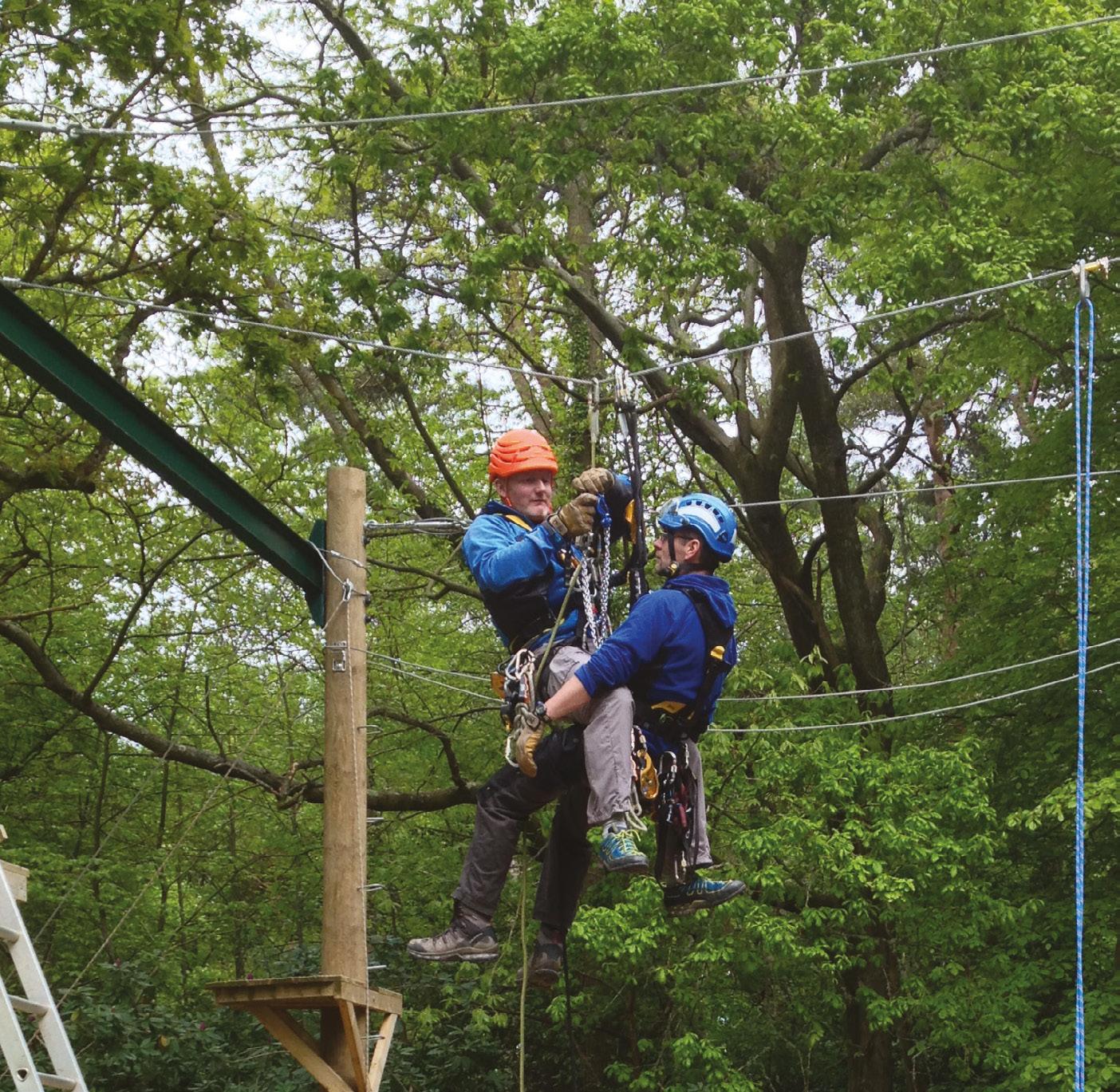

6 Dec. 3.30pm to 5pm.
Barnett the CEO of the IOL will Chair the Webinar, and the panel
in
include members of the IOL Employers Group and other members in leadership positions. Hosted by Jo Barnett and an IOL Employers Panel.

How to Manage Menopause in the Outdoors.
7 Dec. 6.30pm-7.30pm. Hosted by Teresa Byrne.
SOCIALISING AND COMMUNICATIONS



Jo’s Christmas Fireside Catch Up. IOL festive update for Members.
Dec. 7pm to 8pm. What’s next for the IOL? Jo will present the IOL Development Plan for the next 2 years and share initaives from across the full breadth and expertise of the IOL. This is your chance to ask your questions. Let’s make it a festive update, with seasonal attire and the sharing of IOL goodwill. There will be a bit of a quiz and a few prizes!
THERE’S MORE TO COME! There are more webinars being planned which will explore these themes and topics! Keep an eye on the website and newsletters for dates and times and links to book. * Making your equipment last * Working with the impact of the menopause * Outdoor Instructor Level 3 Apprenticeship * Manufacturing miles of a Goretex jacket * Future Footprints * Bank of Proven Practice * Sustainability Sector Group open meeting * Career in OL - an Inpirational speaker * A Career in OL? Examples & options * What is Registered Practitioner / Accredited Practitoner / Leading Practitioner of the IOL all about? * What is Fellow of the IOL all about? * Research in OL - current trends * AIM Inclusivity LGBTQIA+ Work at Height & Rescue for Adventure Activities Lyon Equipment provides Work at Height and Rescue courses specifically for the Adventure Activities sector W&R@lyon.co.uk +44(0)15396 24040 lyon.co.uk • Gain awareness of the safe and efficient work at height techniques in a high ropes course or climbing wall environment. • Develop your understanding of the working at height legislation and the use of appropriate work techniques for ascending and descending ropes, working horizontally and the rescue of a co-worker. • Counts towards CPD points for AMI members. Half-page - TRAINING Work at Height Adventure Activities.indd 1 29/06/2022 09:33:54 SCANNING
HORIZON
and
quality people
the OL sector?
Jo
will
13
IMAGES Image has been supplied by the first author (Graham French). Photographers retain copyright.
TOP TIPS FOR EVALUATION

Impact and evaluation work can sometimes get a bad rap and feel like a burdensome ‘add-on’ to projects and programmes. At The Ernest Cook Trust we believe impact and evaluation should be central to our work and we are in the process of fully embedding it across our programme areas.
With the confluence of crises we now face it has never felt more important to ensure that we are maximising the societal and planetary impacts of our programmes and assets. ‘Good’ impact data allows us to refine our programme areas and also creates a credible and powerful voice to influence policymakers for wider system-change.
But what makes good impact data and how do you most effectively collect it? Here are ten things we have learnt from our impact and evaluation journey so far:
Co-create your evaluation tools

When dealing with complex concepts and complex audiences it’s very helpful if you can co-create your evaluation tools as much as possible, either with your end audiences, or those closest to them. This ensures you are asking the right questions and using the right language. We’re trying to capture changes in wellbeing in some of our programmes, a concept which has been the subject of a long and lively debate. Through our initial experiences of using well-established wellbeing scales, we discovered elements of them were triggering for some of the children and young people we work with. This is something we would have been able to avoid had we co-created the metrics with the teachers closest to them at the outset.
national metrics versus your own

With quantitative data collection there are often going to be trade-offs between using nationally-recognised metrics or creating your own more bespoke metrics. Nationally recognised metrics contribute to a larger evidence base, are directly comparable and are perceived by some as having more clout. However they may not work so well in capturing impact for your particular audience, so the data reliability may be poor.

ISSUE 99 AUTUMN 2022 8
MEMBER SPOTLIGHT
IMPORTANCE OF QUALITATIVE DATA

When we think of impact data, we often think of numbers and surveys, but there is a huge role for qualitative approaches in impact work. We find qualitative approaches are great for measuring the fuzzier elements of change and capturing the why and how behind impacts. Qualitative approaches are also useful in shorter programmes, where metrics may be unlikely to shift dramatically, or can be harder to obtain. We are particularly championing the use of ‘impact storytelling’ in our qualitative approaches; intentional, strategic storytelling designed to advance social impact goals. Stories, unlike facts and logic, use emotion and engage the unconscious, where most decisions are made. They can be very powerful when trying to influence change-makers.
GET CREATIVE WITH YOUR DATA
Impact research can also involve poetry and art. In one of our programmes (The OWL Collaboration) the children have been writing Haiku poems and drawing pictures of nature before and after a residential outdoor week of learning. Through these sorts of activities we can see changes in the use of their language and in something known as their biodiversity perception, which is the level of nature/biodiversity that they perceive to be out there. Biodiversity perception has been proven to be a very important predictor of improved mental wellbeing.


QUALITY OVER QUANTITY
Good impact data is definitely quality over quantity. Too often we feel the need to collect everything and then get lost in what the true insights are. A small amount of really focused insight, telling a really good story, is much more helpful than a huge amount of data with little interpretation.
KEEP UP TO DATE
You need to be very agile in this space! We are living in tumultuous times and the landscape is constantly shifting at many levels. As new research emerges, new draft policy gets published or niche public issues become more mainstream, so too may the focus of your evaluation or the tools you use to collect impact data, particularly if you are wanting to influence policy. We believe in the importance of constantly feeding new research/ thinking into the organisation to make sure we’re focusing on the right things and collecting the right statistics or stories. We also believe in carving out time to sit in the ‘big picture’ space as often as we can and really live the questions we’re trying to answer, and the issues we’re trying to address, more deeply.
ADOPT A THEORY OF CHANGE
We find in this agile and evolving space having a clear and focused Theory of Change is incredibly helpful. This can sound like a big laborious management tool but at its most simple it’s just the thinking behind the change you want to see and can be as simple, or as complex, as you would like it to be. It really helps keep everyone focused on the programme end goals, particularly if there are a number of stakeholders involved. Our Theories of Change reflect the latest academic research and evidence and allow us to distinguish between the programme inputs, short-term outcomes and longer-term cumulative impacts. (For more on Theory of Change, head over to the Institute for Outdoor Learning website).
We find in this agile and evolving space, having a clear and focused theory of change is incredibly helpful.
9 ISSUE 99 AUTUMN 2022
MEMBER SPOTLIGHT
“
Remember, research is skewed
There is an unusual issue with academic research on nature and wellbeing – that it is Western, educated, industrial, rich and democratic. From 2010 to 2021 a University of Vermont study (1) found that 95% of all studies looking at the links between nature and wellbeing were based on a small slice of humanity – white people from high-income Western nations. It’s important to be mindful of this when feeding academic evidence into Theories of Change or decision-making. At The Ernest Cook Trust, we specifically target minoritised ethnic groups in our work and realise there is still so much to contribute to this space from more diverse voices. In particular, people from different cultural backgrounds have very different perceptions of natural landscapes, and this is not well represented in research.

Listen, collaborate, share
And finally, we gain so much from collaborating, listening and sharing. In The OWL Collaboration we have brought together a group of Outdoor Learning Centres from around the UK in a Community of Practice. We meet for a monthly networking meeting and have learnt so much from their different approaches and experiences. We recognise the value of different approaches, but all working towards the same shared outcome and evaluation frameworks are an important foundation of that. By working together in this way we hope to optimise Outdoor Learning provision so that it has a longer-lasting impact on children and young people’s lives.
We welcome opportunities to further our thinking in this space, share learnings or be a critical friend. Please get in touch with: rosie.tudor@ ernestcooktrust.org.uk p
As a UK educational charity, the Trust’s important work helps nurture a lifelong journey of learning, appreciation and respect for the countryside through a range of Outdoor Learning experiences.
Find out more about the Ernest Cook trust...
KEEN TO ADOPT A THEORY OF CHANGE?

Find out more on the IOL website!
REFERENCES
1. Gallegos-Riofrío, C. A., Arab, H., Carrasco-Torrontegui, A., & Gould, R. K. (2022). Chronic deficiency of diversity and pluralism in research on nature’s mental health effects: A planetary health problem. Current Research in Environmental Sustainability, 1-11.
IMAGES
Images 1 and 4 have been sourced from pxhere.com. Images 2,3 and profile imgae have been supplied by the author. Photographers retain copyright.
AUTHOR Rosie Tudor
Rosie Tudor is Research and Impact Manager at The Ernest Cook Trust, a UK educational charity funding and running Outdoor Learning programmes that improve nature connectedness, health and wellbeing, learning and environmental awareness.

WANT TO KNOW MORE?
Find out more about the Ernest Cook Trust here.
ISSUE 99 AUTUMN 2022 10

11 ISSUE 98 SUMMER 2022
ELEPHANT IN THE ROOM?
AUTHOR Jack Reed

Jack Reed is a Ph. D. candidate at The University of Edinburgh. His research explores mobile technologies and social media in residential outdoor education as well as contemporary formulations of society and culture as they are developed and sustained in postdigital space.
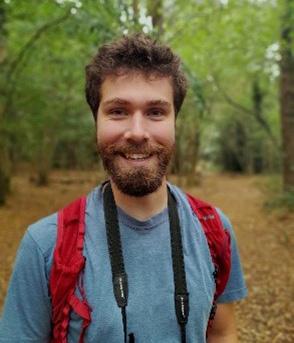
WHY TECHNOLOGY IN THE OUTDOORS SHOULD NOT BE THE ELEPHANT IN THE ROOM


ISSUE 99 AUTUMN 2022 12
NEW SERIES
The place and use of technology in outdoor education often falls into a for-and-against argument. A debate now almost three decades in the making (1), it appears there is still limited consensus on whether technology is good or bad (or maybe somewhere in-between) when taking learning beyond the classroom.


My PhD research has asked how and in what ways mobile technology and social media influence the instruction and experience of residential outdoor education in the United Kingdom. I have engaged with 20 instructors, 11 visiting school staff, and 50 young people at three residential centres in Wales, Scotland, and England and have spent time at each centre directly engaging with participants to evaluate exactly what is happening on the ground. Across the next four issues of Horizons, I will explore why technology should not invoke a knee-jerk “no technology here” reaction, how educators are approaching technology in residential centres, how young people are relating to the outdoors and, finally, look at the future of technology in the outdoors.
This first piece centres on why technology in outdoor education “should not be the elephant in the room”. We know that young people are more connected than ever, and that experiences of growing up are characterised by mobile technologies, social media, and gaming (2). The ability to connect, to have direct and constant access to a network of others and information, has influenced how young people interact, play, and learn. Of course, there are often cited downsides to this sense of constant connection, and we often see narratives of technology addiction, poor mental health, and nature disconnection as reasons for young people to disconnect from their mobile phones.
However, data from Ofcom (3) has indicated a shift in the ways that young people engage with online spaces. Less emphasis is now placed on being social and connecting with others and more emphasis is placed on the consumption of content. By this, I mean the consumption of professionally produced content -- short videos and films from influencers or longer-form content on platforms such as Netflix. Something else has changed too, something I discovered in my own research, there is a level of ‘co-anxiety’ generated when young people cannot connect with parents/carers and parents/carers cannot connect with their child. When we disconnect a young person for an extended period of time in outdoor education, my data has indicated that it is here where participation and learning might be restricted. Worrying about home or people at home worrying about a young person can limit to what extent a participant might be able to fully immerse themselves in an activity. As the instructors in my research described, a young person with a phone in their pocket has a “portable comfort zone”.
This generates new terrain for outdoor education to navigate. Historically, the outdoors has been a place to ‘retraditionalise’ (4), to return young people to a disconnected environment, something which links back to romanticised narratives of adventure. These are historically situated outdoor experiences that are pure, and which detach participants from the frenzied and hyperconnected realities of present society. What we know now is that young people use such technologies to consume professionally produced content and that technology provides a level of security and comfort for young people when engaging in away-fromhome outdoor education.

13 ISSUE 99 AUTUMN 2022
IMPLICATIONS FOR PRACTICE
This raises important considerations for those involved in the development and implementation of outdoor education. I recommend policy makers and practitioners consider the following core questions when thinking about removing mobile technology from a young person.
Have the reasons for technology removal been clearly articulated to both young people and parents? It might be helpful to describe phone removal as part of a ‘challenge’ as this can help young people and parents buy into phone-free time.
what are the consequences of removing a young person’s mobile technologies? I often hear the positive consequences of this (e.g., nature connection or limiting distraction), but in what ways might this negatively affect participation and learning? I have questioned the efficacy of one-size-fits-all approaches before (5) and, given anxiety is acknowledged to restrict our ability to learn, how might a portable comfort zone stimulate safe spaces for participation?
Are personal biases or generational gaps shaping how technology is perceived in outdoor education practice?
This sense of self-reflection has been something I have personally engaged with throughout my own practice, and I have valued asking myself whether my interpretations are framed by my own beliefs and experiences.
What might therefore be needed are more intentional approaches to the use or restriction of technology in outdoor education. As we build programmes and sessions which deliver learning outcomes that we know can last a lifetime, we also know that young people will return from their
outdoor education experience to a hyperconnected society. Outdoor education has a critical role to play, but I remain unconvinced that outdoor education can be truly for all if we do not consider the profound negative impact removing a young person’s technology can have. Technology should not be the elephant in the room and, given youth culture is underpinned by online spaces and immediate connection, this must be considered throughout the design and delivery of contemporary outdoor education. As I have discovered, young people just want to talk about it.
In the next issue of Horizons, I will look at instructor perspectives on social media and mobile technologies in practice, drawing on interviews I have conducted with 20 outdoor instructors. Following that, I will look at how online spaces are framing how young people interpret their outdoor educational experiences through the lenses TikTok and Minecraft. And finally, my last piece will look to the future of mobile technologies and social media in outdoor learning, scanning the Horizon to identify key recommendations for practice. I hope you all enjoy this series, and I am looking forward to sharing my PhD findings with you all p
REFERENCES
1. Strong, D. (1995). Crazy mountains: Learning from wilderness to weigh technology. State university of New York press.
2. MacIsaac, S., Kelly, J., & Gray, S. (2018). ‘She has like 4000 followers!’: the celebrification of self within school social networks. Journal of Youth Studies, 21(6), 816-835.

3. Ofcom. (2022). Children’s media lives, 2022: A report from Ofcom. https://www.ofcom.org.uk/__data/ assets/pdf_file/0021/234552/childrens-media-lives-2022-summary-report.pdf
4. Payne, P. G., & Wattchow, B. (2008). Slow pedagogy and placing education in post-traditional outdoor education. Journal of Outdoor and Environmental Education, 12(1), 25-38.
5. Reed, J., & Smith, H. (2021). ‘Everything we do will have an element of fear in it’: challenging assumptions of fear for all in outdoor adventurous education. Journal of Adventure Education and Outdoor Learning, 1-13.
IMAGES
All images have been sourced from pxhere.com. Photographers retain copyright.

ISSUE 99 AUTUMN 2022 14
TECH IN THE OUTDOORS
LIGHTING THE FIRE
AUTHOR Luke Blackham
Luke Blackham is a fully trained Professional Youth Worker, Qualified Counsellor and Forest School Leader with a Masters Degree in Child Welfare and Wellbeing. His own project Wild N’ Well Outdoors combines all the skills and knowledge he has acquired over the years to support children and young people using the outdoors as a partner in his work.
HOW BUSHCRAFT CAN NUTURE THE FLAMES OF POSITIVE MENTAL HEALTH IN CHILDREN AND YOUNG PEOPLE


It is likely unsurprising that, after a health pandemic and continued unrest across the globe, children and young people’s mental health is a cause for concern. Yet, sadly, this has been the case even before current events (1). More and more people are calling for mental health services which reflect the needs of children and young people, and which can offer accessible support for those in need. But what does this actually mean? What does this support look like and what makes it “accessible”? With increasing interest in the therapeutic benefits of nature, is it time to start thinking outside the box when it comes to mentoring and counselling services?
It may require an adventurous spirit to take such steps, but those of us who work outdoors understand that risk is inherent in our work - not just physical risk but social and spiritual - and with the right approach and mindset, risks can be limited and can also be beneficial. Indeed, a growing body of alternative therapies which utilise risk have proven to be

beneficial (2, 3, 4). Therefore, I suggest that the pioneering spirit of bushcraft can be one of the ways we offer alternative nature-based wellbeing support.
With the success of the Institute of Outdoor Learnings (IOL) Bushcraft Competency Certificate and the ever-growing need for alternative sources of wellbeing support for children and young people, is it time to consider a ‘Wellbeing in the Outdoors Competency Certification’? Just like the IOL’s bushcraft competency certificate, this award could offer practitioners a baseline with which to develop outdoor sessions aimed to support wellbeing using the natural world as a co-facilitator. My own counselling practice uses the Micro-Adventure Therapy Approach (5) and has shown me the benefits of creating a sense of adventure in smaller spaces to support wellbeing in children and young people. Those who have engaged in this work often find their wellbeing increasing on average by 30%, meaning they have increased confidence, improved communication skills, higher resilience, see a decrease in stress levels and an increase in emotional regulation.
15 ISSUE 99 AUTUMN 2022
MAKING IT HAPPEN
In this article I explore the possibility of a Micro-Adventure Mentoring approach which uses bushcraft as the vehicle to support participants wellbeing and mental health. Bushcraft as a topic covers a wide range of areas including tool use, cooking, shelter building, navigation and more. Due to the variety of topics which can be studied within bushcraft, it can be argued the term evades a clear definition, but Ray Mears sums it up nicely:
“Bushcraft is the term I employ to describe a deeper knowledge of the wild and of nature” (6)
For this article, I would agree with Ray, but would add a mental health aspect and say that:
“Bushcraft is an activity which enables us to obtain a deeper understanding of the natural world, allowing us to connect with ourselves whilst enhancing our sense of wellbeing.”

Much has been written on the healing effect the outdoors can have on people, with GP’s even prescribing time in nature for patients. For those who work with children and young people, alternative approaches to counselling or one-to-one mentoring are becoming increasingly popular. These approaches include walk and talk therapy, creative arts, movement, music and more. So, why not bushcraft?
DEVELOPING A SECURE ATTACHMENT AND FACILITATING A SENSE OF PLACE

For many, accessing counselling or mentoring can be a daunting experience and the environment is key in fostering a positive relationship between the worker and those accessing services. Using bushcraft to support wellbeing and mental health, the safety of the attendee needs to be taken into consideration both mentally and physically, as the work will cover a variety of topics, with bushcraft activities used to facilitate productive dialogue.
The approach of using bushcraft skills and tasks to support psychological wellness increases a feeling of connection between the worker and young person which in turn can form a positive attachment and a secure base which is central to positive development (7). This secure base is developed as trust is gained by both worker and young person in order to complete bushcraft-based tasks safely together. Attachment theory forms part of my own integrative approach to working with people, as theorists considering a variety of attachments (not just to primary caregivers) to be important across the life course. Therefore, I am conscious of the importance of the relationship developed between myself and those I support during my time with them and ensure I work to keep them safe, emotionally and physically. Safety in a session can include: a joint review of our working area (I undertake a full check prior to the session); setting boundaries for our work such as confidentiality, expectations and goals; and rules such as those for safe tool use. These rules and expectations are part of the sense of security between myself and the young person which informs a positive attachment.
It has been noted that people also form attachments to places. Together, whilst working in the outdoors the child/young person and practitioner
ISSUE 99 AUTUMN 2022 16
will construct and attach meaning to their shared environment, this then becomes a special place rather than just a space, which can be considered healing for those engaging in such an environment and process. For example, I have worked with a number of children and young people who have attributed significance to a part of the environment; trees in particular take on new meanings such as the talking tree, the quiet tree or spirit tree. These meanings evoke certain feelings within participants, opening doors to further discussion regarding their sense of wellbeing. It is therefore vital that workers using bushcraft as a medium for supporting wellbeing consider these factors when establishing a mentoring relationship as they will lay the foundations for positive engagement and increase the chances of improving participants mental health and wellbeing.
THE MICRO-ADVENTURE APPROACH



As a counsellor and mentor, I engage in what I call “Micro-Adventure” Counselling/Mentoring. Micro-adventure counselling/mentoring is a form of adventure therapy which operates on a smaller scale. Typically, adventure therapies take place in the wilderness and often in groups. The micro-adventure approach facilitates a sense of adventure in an area that is accessible and closer to home, such as an activity centre, local park or even on school grounds. The Micro-Adventure approach to supporting children and young people works by engaging in experiential education using bushcraft skills. This then facilitates dialogue where the activity is linked to mental health and wellbeing. Through this, those involved can build their confidence by acquiring new skills and enhance their psychosocial wellbeing by engaging in a therapeutic dialogue in a co-constructed safe space. This approach to supporting children and young people’s wellbeing is effective as it provides both therapeutic and educational outcomes which increase confidence and self-esteem through the learning of new skills.
THE MICRO-ADVENTURE APPROACH IN ACTION
Below are a few examples of how I’ve used the micro-adventure approach in my own practice with young people. These are prime examples of how the micro-adventure approach using bushcraft activities can stimulate conversations around mental health and wellbeing whilst learning outdoor skills. Many more options are available, but more work needs to be done to establish this way of working as a viable addition to children and young people’s wellbeing services amongst the wider community.
FINDING SHELTER
In another session a young person and I focused on building a natural shelter for our first task. By working together on this process, a positive relationship was formed as we worked towards a common goal. During this session we were able to discuss the importance of shelter i.e., safety, cover and warmth, linking it to bushcraft and survival skills. The conversation then segued into the importance of safe relationships and our experiences with others, both positive and negative, using the shelter as an example of what keeps us safe and as a metaphor for healthy relationships i.e., reliability, warmth, and protection.
17 ISSUE 99 AUTUMN 2022
FIRE STARTER
Very often when I work with children and young people, we will discuss the importance of fire and safety before learning how to start a fire and light it together. I will then use the fire to support a conversation around emotional regulation. One young person was able to understand the impact of uncontrolled anger when we used the metaphor of a wildfire vs a controlled fire. We discussed how a wildfire is all consuming, damaging the environment around it and the harm it causes to others. On the other hand, a controlled fire is helpful, it keeps us warm and helps us boil water for good use. Together we linked this to anger; anger is an emotion and there is nothing wrong with it, when out of control, however, it is like a wildfire, causing harm to the young person and those around them. On the following session they reflected on how they would manage their anger and imagined controlling their inner fire by reducing it to a size that was manageable and useful. They were then able to express their feelings before they became too big to control and talked to those around them.
NEXT STEPS
I believe that outdoor educators are in a prime position to offer support for wellbeing and this can be both as a form of therapy or mentoring depending on the skill sets and qualifications of the practitioner. As professionals seek new and innovative ways of supporting people’s mental health, with the emphasis on time outdoors as part of the solution, then those who work outdoors and have nature-based knowledge and skills are in prime position to offer support that is both educational and therapeutic. To ensure that such an approach can be established and reach the wider community, I propose that the Institue for Outdoor Learning should add a ‘Wellbeing in the Outdoors’ Certificate to its existing training competencies p
WANT TO KNOW MORE?
If you’re interested in knowing more about Luke’s work, check out his website here.

REFERENCES
1. House of Commons Health and Social Care Committee. (2021). Children and Young Peoples Mental Health. Eighth Report of Session 202 -22. House of Commons. London.
2. Pryor, A., Carpenter, C., & Townsend, M. (2005). Outdoor education and bush adventure therapy: A socio-ecological approach to health and wellbeing. Journal of Outdoor and Environmental Education, 9, 3–13.

3. Ungar, M., Dumond, C., & McDonald, W. (2005). Risk, resilience and outdoor programmes for at-risk children. Journal of social work, 5(3), 319-338.
4. Gabrielsen, L. E., Eskedal, L. T., Mesel, T., Aasen, G. O., Hirte, M., Kerlefsen, R. E., ... & Fernee, C. R. (2019). The effectiveness of wilderness therapy as mental health treatment for adolescents in Norway: a mixed methods evaluation. International Journal of Adolescence and Youth, 24(3), 282-296.
5. Blackham, L. (2022). Micro-Adventure Therapy. BACP Children, Young People and Families. Leicester.
6. Mears, R. (2003). Essential Bushcraft: A handbook of survival skills from around the world. Hodder & Stoughton.
7. Frost, L & McClean, S. (2013) Thinking about the Lifecourse: A psychosocial Introduction. Palgrave Macmillan.
IMAGES

Images 1, 2 and 4 have been sourced from pxhere.com. Image 3 and profile image have been supplied by the author. Photographers retain copyright.
NEED SOME ACTIVITY INSPIRATION?
Check out Nature Notes on page 37.
ISSUE 99 AUTUMN 2022 18
LEARNING BY LEADING

PROGRAMME

OUTDOOR
AUTHOR David Addis

Dave works at International College Hong Kong as the Outdoor Education Specialist. He is an ML, an APIOL and currently studying for a Masters in Outdoor Education at the University of Worcester.

HONG KONG, A SECONDARY INTERNATIONAL SCHOOL IN THE NORTHEAST OF HONG KONG.
AUTHOR Douglas Kidd
Douglas has worked as a teacher and leader in the UK and International education for over 30 years. His interests include alternative curriculum approaches and promoting the use of the outdoor environment in education. He currently leads the International Primary School of Groningen in the Netherlands.
19 ISSUE 99 AUTUMN 2022
THE OUTDOOR LEADERSHIP
LEADERSHIP THE OUTDOOR LEADERSHIP CERTIFICATE PROVIDES ONE VALUABLE CULMINATION POINT OF A COMPREHENSIVE OUTDOOR CURRICULUM, DRAWING TOGETHER STUDENTS’ INDIVIDUAL SKILLS AND INTERESTS, DEVELOPING COLLABORATION AND TEAM WORKING SKILLS AND ENRICHING STUDENTS’ CONNECTION TO THE LOCAL ENVIRONMENT. THIS PROGRAMME IS DELIVERED AT INTERNATIONAL COLLEGE
That’s how one of our students described what he did as a school Outdoor Leader. There is more to the programme than that, but it does get to the heart of the role. For the last seven years we have been developing the Outdoor Leadership Certificate for students in Year 10 and up. It has gone through a number of iterations but always at the core of the programme are our older students leading younger students to be engaged in the natural world around our school.
THE PROGRAMME





The Outdoor Leadership Certificate is an optional award which students can start working towards from Year 10. To achieve the award students must support four days of outdoor excursions with younger students in our school or from our partner primary schools. To give a concrete example, we run a programme called Wild Science for Year 5/6 students in our partner primary schools. A centrepiece of this programme is that all groups are led by our own students acting as Outdoor Leaders. Our own students have a training day to get to know the activities and the locality, looking at places they already know from a new perspective as prospective leaders. They lead warm up games and coordinate logistics throughout the day, supporting the younger students as they come to each new activity. One day which particularly sticks in our memory is when we discovered a newly built wasp’s nest blocking our path a few years ago. With only 40 minutes until the primary school arrived, we had to shift location and redesign the activities to fit the new site. The Outdoor Leaders invented an extra 20 minutes of warm-up games to facilitate setting up the new site, and smoothly led their charges through the activities at the new location. Their sense of pride in their own resilience and the way in which they worked as a team both with fellow students and the teaching staff was palpable.
In more recent years, we have extended the scheme to allow keen Outdoor Leaders to sign up to an extended programme of 10 lessons to explore more aspects of outdoor leadership. They examine the benefits of risk-taking, seek out the multiple stories of a place such as the local history and ecology; as well as mastering practical skills, such as how to engage others, be self-reliant when outside, read the weather and assess the risks involved in their activity. The preparation and leadership for the four outdoor excursions that the student must volunteer with remains the same but are enriched by these lessons which provide deeper insight and opportunities for reflection on what they are doing.
BESPOKE FOR OUR SCHOOL
The current scheme is bespoke to our school. At its inception, we looked at existing awards and programmes that would provide a framework to give certification, but none of them seemed to quite fit our school ethos, timetabling or our aspirations for the outdoor learning programme...so we made our own! As its popularity has increased, we have added the Level 2 certificate to reflect students’ additional and broader outdoor leadership experiences. This level requires additional days out and for the student to obtain an external qualification, such as a first aid certificate, Leave No Trace award, climbing or kayak awards.
OUR OUTDOOR LEARNING ETHOS
The school has always sought to incorporate outdoor and experiential learning into its curriculum, and in recent years decided to employ a dedicated team of outdoor professionals and create the Outdoor and Experiential Learning department. The department has a clear vision
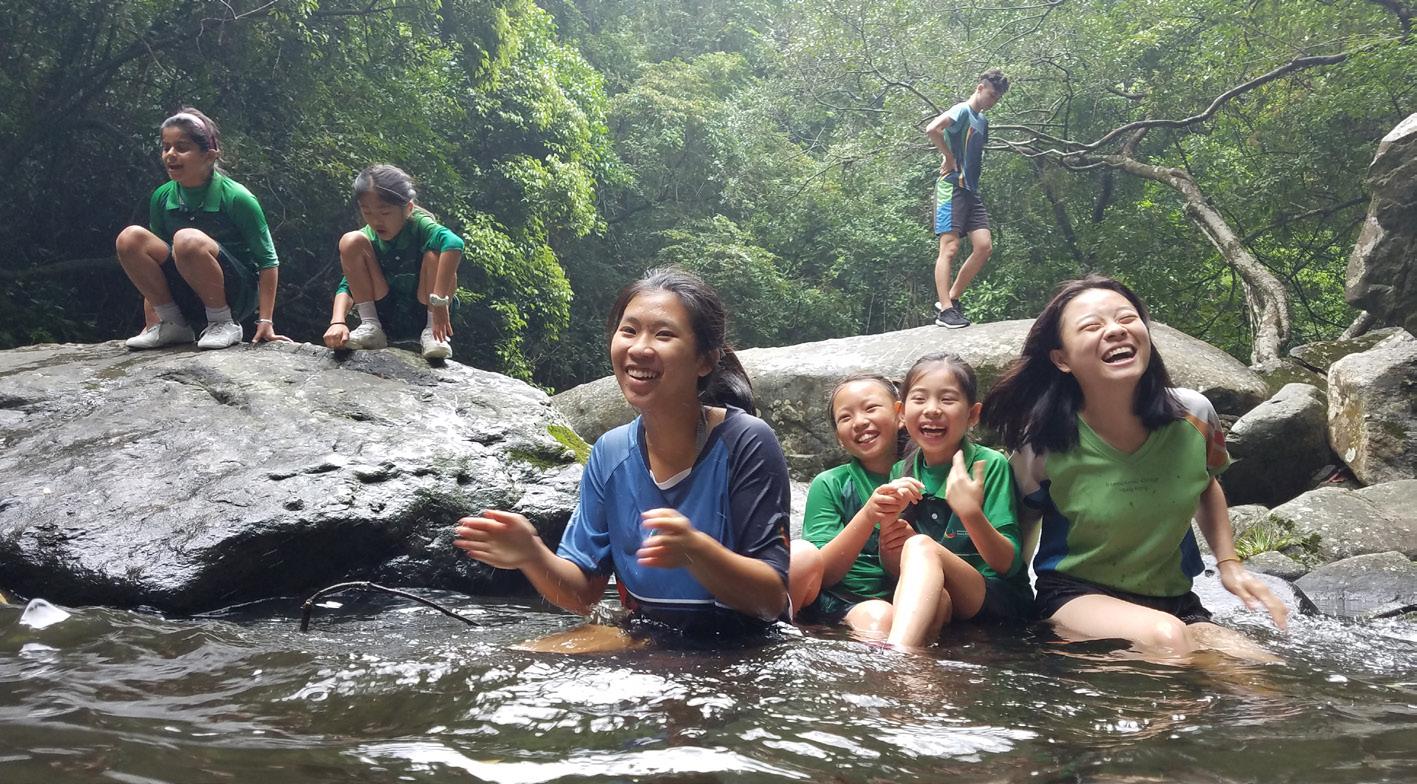
The school’s ethos can be summed up more succinctly: work hard and be nice.
The Outdoor Leadership Programme enables us to implement this vision in line with this ethos at a level appropriate for students aged 15 and older. We support our Outdoor Leaders to become conscious of the ecosystem and place they are working in and act thoughtfully for the benefit of the environment and the younger students they are introducing it to. They learn to articulate their values, knowledge, skills and abilities as they lead those younger students- which certainly entails them working hard and being nice!
ISSUE 99 AUTUMN 2022 20
“...you go outdoors and you lead the younger students to go to places they’ve never been before”
THE LANDSCAPE AROUND THE SCHOOL
Unlike most secondary schools in Hong Kong, we are well outside the dense urban areas with which Hong Kong is synonymous. Located in the north-eastern corner of Hong Kong close to the border with mainland China, we are nestled on the edge of two country parks characterised by mangroves, steep hillsides, waterfalls, abandoned Second World War trench systems and traditional Hakka villages which are all often incorporated into our curriculum. For us, winter is typically the hiking season as the climate is cool and dry then. There is a good network of maintained trails, campsites and BBQ areas which we often use for many of our programmes. These are particularly useful for the primary school programmes, as while you can access woodland and explore on smaller tracks, dense, shrubby undergrowth and mosquitos makes this very chal lenging for students. This is especially true in summer when the heat and humidity makes hydration a constant challenge for outdoor activities and thunderstorms keep us off the summits. As a result, in summer we tend to venture into the streambeds where it is easier for students to cool off, search for newts, race rubber ducks to learn about stream morphology or simply take a moment to be mindful and appreciate the gentle breezes channelled up the stream.
PARTNERSHIPS WITH PRIMARY SCHOOLS
Our secondary school has close partnerships with five primary schools whose students come to us for their secondary education. These feeder primary schools are all within the mainland New Territories & Kowloon areas of Hong Kong, but in diverse areas - some more rural, some in very built up parts - and we notice this play out in the comfort level of their students when joining the outdoor experiences.

We were searching for ways to give our older students authentic experi ences, real responsibilities and to have fun outdoors. Our feeder primary schools wanted their students to engage with the outdoors more, but lack of staffing and experience proved a barrier. The needs of both parties aligned and the first Wild Science day went ahead a few years ago. Stu dents acted as group leaders and assistants, with teaching staff leading the activities. This partnership with the primary schools has grown to offer local heritage days exploring the Second World War relics, a Year 3 Mangroves day led by science students and Campfire Cooking days using produce from the school garden and local farms. Students from the pri mary school also undertake a ‘rite of passage’ event, where accompanied
CHALLENGES AND TENSIONS

As with all new schemes there were some early challenges, some of which continue to this day. There were not and are not perfect solutions to many of these challenges, rather we seek to navigate, find common ground, allies and creative pathways within the tensions.
1. STAFFING
When we began this programme there was one teacher leading and developing it, one Teaching Assistant providing administrative support and a rotating team of teachers actually working on the days. Bringing in specialist staff from our new Outdoor and Experiential Learning depart ment has allowed us to expand the types of activities on offer and stretch the role of the student Outdoor Leaders.
2. availability of student outdoor leaders
The programme is aimed at students who are in year groups focused on examination courses. As such it remains a challenge to release them from classes sufficiently to enable them to engage with the programme whilst satisfying other course requirements.
There has been support from senior leadership for this programme and indeed the initial impetus was from a member of senior management which was helpful in that it was articulated clearly at that level initially. In navigating these tensions we have focused on securing buy-in from staff, parents and students. This has revolved around two elements:
1. PERSONAL AND SOCIAL DEVELOPMENT
Students have fun and develop supportive friendships as they work out doors. They are able to build different relationships with staff with whom they are working as partners. They have rich and intense days but also times of fun and relaxation in the beauty of the countryside. They learn to care for and support the younger students and this can be a profound experience for many of them.
2. ACADEMIC DEVELOPMENT

As part of the programme we give students a certificate and a bespoke reference. Students can also use this work as evidence as part of a port folio in applications to university. This has been seen as valuable by all stakeholders. In addition we place responsibility on the Outdoor Leaders themselves to cover missed work and ensure they are up-to-date with their studies when they know they will miss lessons which enhances their sense of autonomy and responsibility.

21 ISSUE 99 AUTUMN 2022
by some of the Outdoor Leaders they walk together from the primary school over the hills to their new secondary school.
OUTDOOR LEADERSHIP
HOW DO OUR STUDENTS BENEFIT?
Building community

Students working across year groups helps create a sense of community. The older students, when given real responsibilities of helping younger students to move across rocks in a streambed, take it seriously. They correct their peers’ behaviour and feel a great sense of reward to know they’ve given another student a fantastic first adventure. For the younger students embarking on this trip for the first time, they have something to aspire to in the older students while also learning the ethos of the school and feeling a sense of community support. This can be seen back in the school playground and sports teams as students recognise each other and give a smile.

Re-visiting places
Building familiarity with our local natural areas helps students value a space more. Their own stories and memories become intertwined with those of the places they visit often. By revisiting a place, outdoor leaders commented on how they were more aware of their own growth, from their first stumbling experience to now confidently gliding across the terrain to assist others.
Less skills, more skilled
The training for our Outdoor Leaders has focused less on outdoor technical skills and more on the role of support and engagement with the younger students. With fewer technical skills to learn, it allows more students to get involved straightaway with less chance of serious consequences or the need for an adult to step in and take control.
Instead, on each excursion, the Outdoor Leader’s delivery style is nurtured and they are gradually made aware of the complexities of their craft - how the weather and terrain affects a group, managing excited or nervous children, telling the story of a place.
LEARN TO LEAD, LEAD TO LEARN
Within our school, and with local employers with whom our students have often gone on to work on holiday programmes or after graduation, our Outdoor Leaders stand out as being pro-active, adaptable and with a level of workplace maturity hard to find from other youngsters that age. They have learnt to lead, and learnt through leadership. They have learned to be flexible and resilient, how to make others feel safe and comfortable and how to see their environment in a more nuanced way, as an ever-changing and everthought provoking place that will reward their attention. What better skills for the wider world we all share p
USEFUL RESOURCE
“We found looking at becoming an outdoor leader through the lens of enskilment helpful, as it moved learning the role beyond purely the technical skills and nicely drew together all the social and natural elements of growing up and dwelling in a place.”
Click here to view.

ISSUE 99 AUTUMN 2022 22
THE NATURE FIX UNDERSTANDING ‘NATURE’
 AUTHOR Dr Jenni Myers
AUTHOR Dr Jenni Myers
Jenni Myers, founder of The Nature Mind, has a PhD in Psychology gained through researching Wilderness Therapy, an MA in Interdisciplinary Psychology, and a BSc (hons) in Psychology. She also have an NLP Master Practitioner Certificate, a Certificate in Counselling and has a fascination with people’s relationship with nature.


23 ISSUE 99 AUTUMN 2022
IN THIS FIRST ARTICLE OF A BRAND NEW SERIES, JENNI MYERS UNPACKS
HOW
OUR CONCEPTUALISATION OF ‘NATURE’ HAS EVOLVED
If I asked you to close your eyes and create a mental image of nature, what would you see? You might picture trees and forests, mountains, or lakes. You might see the ocean, desert or even the tundra. But where are you in this picture? Do you feel like you belong, as part of nature? Or are you purely an observer, standing aside and looking in?
Within residential outdoor education nature is often used to describe an environment which is largely untouched by humans; e.g. young people are moved from their ‘normal’ learning environment and taken to a remote and scenic location to learn in the outdoors. However, using the term nature in this way prompts the question ‘what is nature?’ and can humans be separated from it? In this article, I will unpack this tension and seek to propose a new way of understanding the complex interrelationship between humans and the world in which we live.
THE CONCEPT OF NATURE

Examining early attitudes towards nature highlights how removed it seems people have become from the world around them. Like most other animals, humans did once live in harmony with their environment. Contemporary understandings (those which have proliferated in the 21st Century) of nature did not exist for early hunter-gatherers, everything was a part of the habitat in which they lived. For example, life for the North American indigenous people was not sustainable unless they accepted a close relationship with their surrounding environment. They considered humanity as equal with the rest of nature and they believed their health was dependent on living harmoniously with their environment. Of course, it’s easy to romanticise the lives of indigenous people and their relationship with the land (1), but in an increasingly human-centered world it has become difficult to consider humans as living harmoniously with nature.
It is argued that the attitude towards nature which was adopted by early hunter-gatherer societies was changed through the progress of civilization (2). In the Ethics, Spinoza argues that an anthropocentric view developed in humans because they have continually found things in nature which are useful to them (3). This has led humans to a belief called resourcism, which, although a contested term, is used here to refer to the belief that humans are the most important aspect of nature and the purpose of everything else is to serve humans; nature is objectified and ‘othered’ by humans. Alternatively, Wolloch (4) examines the view that communities were initially formed as a defense against the powers of nature, which in turn transformed into control and eventually manipulation. Indeed, it could be argued that this began our current approach to nature where economic and social progress are dependent on controlling the natural world. It was through the Industrial Revolution that it seems nature and the environment were reduced to a commodity, causing a separation between society and nature; at a time of rapid cultural and social change, it could be argued that this separation informed the development of Western culture and how it relates to nature. The impacts of this perceived separation affects both humans and nature. For humans a lack of contact with the natural environment can be a contributor to common mental health problems such as anxiety and depression. It also contributes to the human disregard and resultant behaviour towards the natural environment. Through exploiting the Earth’s resources for their own benefit, humans are polluting the air, land, and waters. The earth is rapidly losing acres of forest and habitats are being irreversibly changed, putting 1 million species at risk of extinction (5) and ultimately threatening the future of humanity on Earth.
Modern attitudes towards nature are neatly summed up in a single sentence from William Cronon: ‘the place where we are is the place where
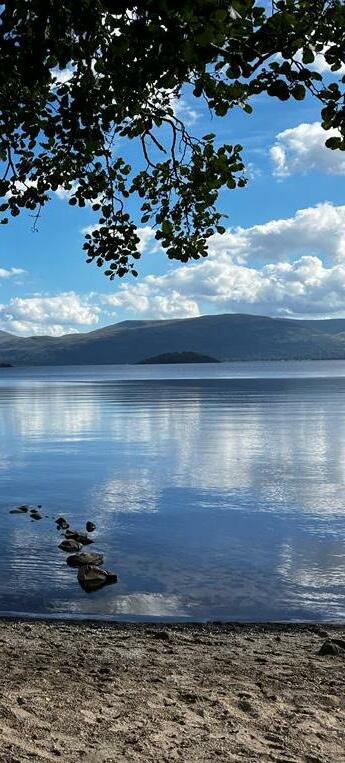
ISSUE 99 AUTUMN 2022 24
nature is not’ (6, p. 80). I’ve often heard people say that when one visits nature, one should ‘take nothing but photographs and leave nothing but footprints’. In other words, people should leave no trace of themselves and their presence, again creating the idea of nature being something which is separate from humans, which a person can enter and leave. Indeed, we are living in a world in which nature can be prescribed for health benefits, a condition known as Nature Deficit Disorder (NDD). For example, in an article on NDD, Richard Louv (7) talks of giving someone the gift of nature as if it is something they are lacking, or bringing nature to people as if it is something they are at a great distance from. This is not to dispute that people may be lacking interaction with the natural world. Instead, it is bringing into question the discourse which too often falls prey to the misconception that nature is something which people can be removed from. The problem is not that people are removed from nature, but that people have become disconnected with the nature inherent within themselves. Maybe ask yourself, in what part of you and your life (e.g. your body, your mind, your work) might you find innate traces of nature?

IN PRACTICE
There is an extent to which it is difficult to avoid conceptualisations of nature which separate humans from the natural world around them, especially in residential outdoor education. My intention is not to be overly critical, but instead to draw attention to the problems that these attitudes could create for programme planning and delivery. Care should be taken when choosing how one refers to nature and the natural world, as these attitudes are often adopted by participants. This has the potential to create a bigger problem, as presenting participants with an attitude towards nature which strengthens a sense of separation may result in an inability to fully benefit from interacting with the natural environment on a residential programme. Indeed, this may prompt residential participants who already struggle with new environments to attach negative perceptions to nature, and develop a stronger connection to their home environment.
A common issue in residential outdoor education is the difficulty in maintaining the positive impacts participants may experience whilst on the programme, such as increased self-esteem, confidence and enhanced mental wellbeing. The differing perceptions a participant may develop of their home environment and the natural environment may contribute to

this; if participants recognise that the positive impacts they experience are achievable in a natural residential setting, then when they return home (potentially to an urban environment) participants may no longer be able to tap into these positive benefits. Further, participants may romanticise about the natural environment on a residential programme which could affect participants ability to transfer positive impacts into their everyday lives. What I am trying to highlight here, is how the act of offering dichotomous conceptualisations of humans and nature through outdoor residential experiences may be limiting the real-world impact that residential programmes can have on young people.
To fully address this problem, I believe that it is necessary to draw attention to the language which is being used in communication regarding nature. The very language which is used to talk of a ‘disconnection’ from nature still reinforces the concept that nature is something which can be disconnected from. Therefore, in finding a solution to the disconnection from nature, it is necessary to find a new discourse which simultaneously describes the disconnection, yet still demonstrates the human position within nature. A starting point should be to avoid using the term ‘connection’ or anything which implies that nature is something which can be disconnected from.

25 ISSUE 99 AUTUMN 2022
A term which better reflects the state of the present relationship with nature is ‘disidentification’. People have not become disconnected from nature, as even though they may not feel a part of nature, it is something which is engrained within them. This sense of separation from nature could be more accurately described as a disidentification with nature, meaning that a person no longer identifies themselves as a part of nature, even if innately they are.


Therefore, next time you are talking about a connection to nature, I implore you to think about whether there might be a better way of describing it. For residential outdoor education, this could be built into the language and communication around programmes – starting before young people even arrive at the centre. Rather than the programme being communicated as ‘time in nature’ which serves to benefit participants, it could be described as ‘a week where participants can re-identify with the nature that exists within themselves’.
In the next issue, I’ll be picking up the conversation around learning transfer from residential outdoor education and taking a closer look at how positive benefits from outdoor learning can be further developed in participants’ home lives p
REFERENCES
1. Roberts, J. (2012). Beyond learning by doing: Theoretical currents in experiential education. Routledge.
2. Shepard, p. (1982). Nature and Madness. Sierra Club Books.
3. Kober, G. (2013). For they do not agree in nature: Spinoza and Deep Ecology. Ethics & the Environment, 18(1), 43-65.
4. Wolloch, N. (2013). The liberal origins of the modern view of nature. The Tocqueville Review, 34(2), 107-131.
5. United Nations. (2019). UN Report: Nature’s Dangerous Decline ‘Unprecedented’; Species Extinction Rates ‘Accelerating’. https://www.un.org/ sustainabledevelopment/blog/2019/05/nature-declineunprecedented-report/
6. Cronon, W. (1996). Uncommon ground: Rethinking the human place in nature. WW Norton & Company.
7. Louv, R. (2009). Do our kids have nature-deficit disorder. Educational Leadership, 67(4), 24-30.
NATURE ON YOUR MIND?
Click here to check out Jenni’s purpose built resource, The Nature Mind, and get in touch with her for more information.

IMAGES
Images 3 and 4 have been sourced from pxhere.com. Images, 1, 2 and 5 have been supplied by the author. Profile image has been supplied by Catherine Dunn. Photographers retain copyright.
NATURE THERAPY
See page 15 for insights into how the natural environment could be used as an alternative therapeutic service.
ISSUE 99 AUTUMN 2022 26
A PICTURE OF OUTDOOR LEARNING PARTICIPATION
AUTHOR Dave Harvey
Dave has recently completed a PhD through the University of Cumbria, looking at the development of progression and eco system models to enhance engagement in Outdoor Learning. He is currently working as a Lead Practitioner at Langdale C of E Primary School in Cumbria.

In 2015 the Blagrave Trust and IOL commissioned a systematic review of the evidence base supporting the effectiveness of outdoor learning (OL). The subsequent report, often referred to as the Blagrave Report (1), was intended to provide a ‘coherent sense of the sector as a whole’, as well as assessing what was being measured and how robust the methodology was. However, the authors found no single source of data that gave an indication of scale and as a result they recommended that the sector ‘pull together the various data sources…to give the current picture and create a system to regularly capture data on the types and volumes of activity’.
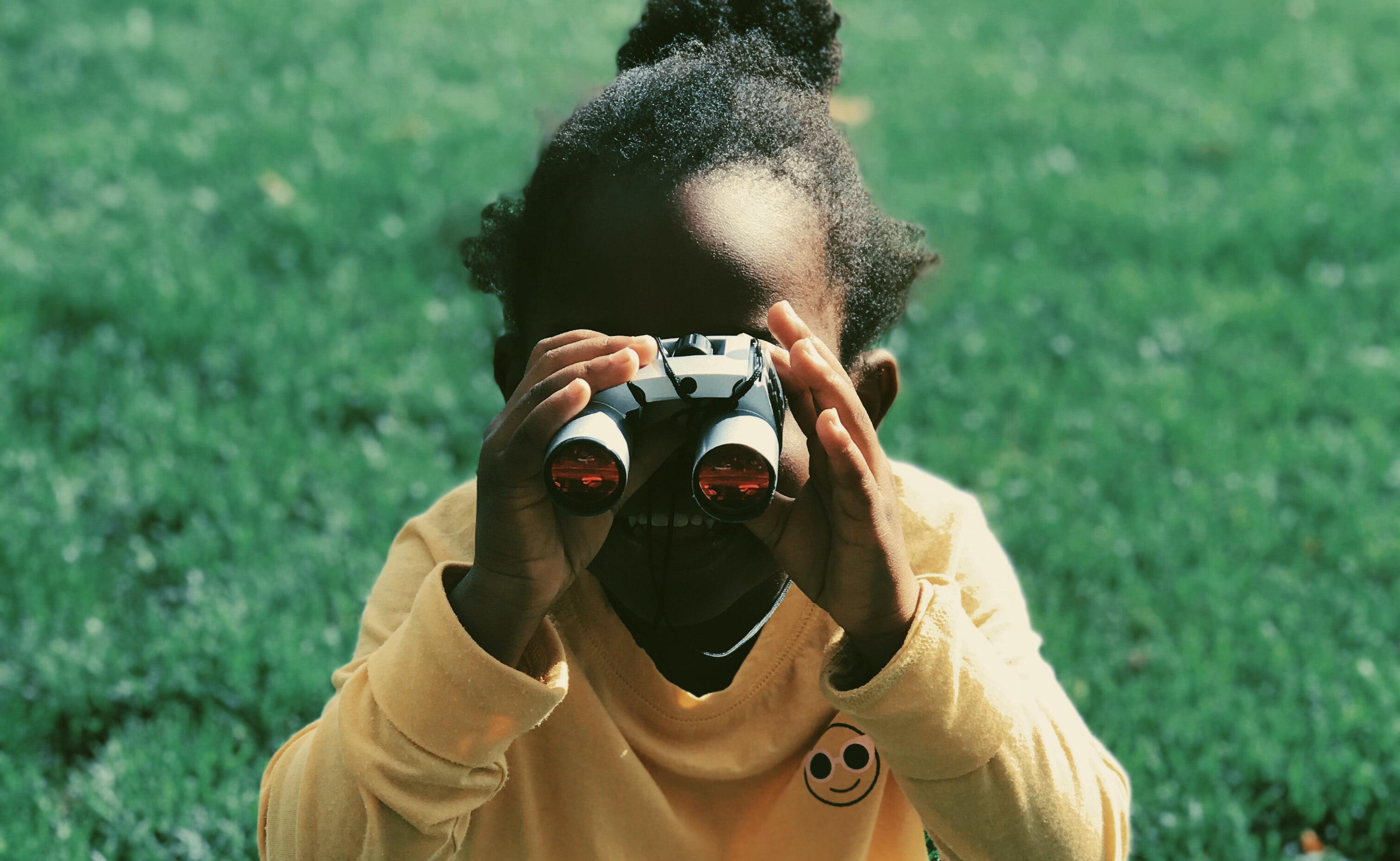
This article seeks to contribute to that challenge by bringing together various publicly available or easily accessible data sets that will enable future assessment of levels of participation. The data included in the summary table is mostly publicly available (see references) or obtainable through a phone call. The 2019 data is pre-pandemic and therefore


27 ISSUE 99 AUTUMN 2022
PART 2 OF 3
provides a possible benchmark against which to measure both the impact of Covid-19 on participation and the results of future participation strategies. The content of the table is debatable of course, and it is offered here as an initial foundation to promote discussion.
The author fully expects it to be critiqued and modified as new data sources become available and thinking develops.
CHALLENGES
Assessing levels of engagement with OL is problematic for several reasons.
Firstly, the different perceptions of OL, reflected in its broad definition as an ‘umbrella’ term, lead to different ways of accounting for participation. In England, primary school provision, for example, can be regarded as an approach to delivering the curriculum, outdoor focused residentials, Outdoor and Adventurous Activities as part of the PE curriculum, Forest School provision or John Muir Award (JMA) participation. Secondary schools, on the other hand, may look to residentials, the Duke of Edinburgh (D of E) Award, activity weeks at the end of the summer term, and GCSE and A-level provision. This article assumes a facilitated approach where there is a generally accepted focus on personal and social developmental and/or environmental outcomes. Not included are data sets that predominantly relate to recreation, for example, membership of National Governing Bodies (British Canoeing, for example), or memberships of environmental charities, such as the RSPB.
The second problem is one of quality and ‘what counts’ as measurable OL. Is two hours of Forest School per week with 6 year old children comparable with the D of E Award scheme targeting 15 year olds? Different provision leads to different outcomes, and so it is important not to conflate all outdoor experiences into one ‘homogeneous entity’ (2). A related issue of significance to the voluntary D of E, Scouts, Girl Guides and National Citizen Service (NCS) schemes is that these are broader than OL alone and allow for different levels of OL engagement. Long term membership of the Scouts, for example, is likely to offer a very different range of experiences to Phase 1 of the NCS programme, no matter how important a part of that scheme it is. Simply assuming that membership of the Scouts or Girlguides equates to OL engagement is also problematic as there may be variation in local provision that depends on personal interest, volunteer capacity and leader qualifications.

The third challenge is available data. Organisations hold varying levels of data for their own participants and members, and account for it in different ways. PhD research requests to the Scouts and D of E revealed local level data down to individual school level (D of E) and unit level (Scouts), but with differences in geographic boundaries between the two organisations. A similar issue is apparent in social prescribing settings where Primary Care Trusts cover multiple counties and local authorities (LAs) making any data that may be gathered from such bodies difficult to compare.
A potentially large source of data is available through the EVOLVE trips and visits notification and system, predominantly used by maintained, academy, and independent schools in England, Scotland and Wales and currently subscribed to by over 22,000 organisations (3). LAs that buy the service require maintained schools to submit details of trips and visits that fall into three categories: overseas, residential or involving specifically designated outdoor and adventurous activities. However, activities that are part of normal on-site school practice (e.g. orienteering, team building or curricular related activity) do not require notification, and while national level interrogation is feasible, analysis at a more nuanced level that enables meaningful conclusions to be drawn regarding OL participation is difficult. The data is also problematic at a more local level as academics are not required to use the service (although many do) and
other organisations offering similar services also exist.
Other sources of data are residential centres and providers themselves. A pre-Covid attempt to gauge the scale of participation in Association of Heads of Outdoor Education Centres (AHOEC) member centres, for example, returned conservative estimates of 3 million person-days per annum (4), but attempts to gather data have proven difficult due to different accounting methods, response rates and organisational membership. How data is presented is also significant as organisations can use their own for specific purposes. Reports that contain estimated or extrapolated data therefore need to be read with this in mind.
PARTICIPATION DATA
So, what data does exist?
In a school context, the plethora of interpretations of what counts as OL and the discretionary nature of provision means that gauging the various levels of participation is very difficult. In Scotland, Scottish Natural Heritage surveys of schools (2) carried out eight years apart found an average of 30 minutes per pupil per week being spent on outdoor provision in primary schools, up from 19 minutes per week in 2006. The survey also provides information on the nature of provision, showing that approximately one third of the time was spent in school grounds, a further third beyond the school and a quarter on residentials. In secondary schools, 16 minutes per pupil per week were spent on outdoor provision, up from 13 minutes in 2006. Residentials accounted for approximately two thirds of provision. Further repeat surveys are planned which will enable an assessment of policies and practices seeking to encourage greater participation. There is potential to apply a similar methodology in other UK countries.

ISSUE 99 AUTUMN 2022 28
In England, the newly established Children’s People and Nature Survey (C-PANS) offers the potential to assess children’s access to outdoor learning in school. The first results from the surveys carried out in 2021 (5) showed that when asked about how often they had done activities or lessons outside that were not PE, 30% of 8-15 year olds said most or every day, 33% once or twice, and 34% never. Although not as detailed as the Scottish survey, the data can be broken down to primary and secondary age groups. The fact that it is being conducted at scale on a regular basis also provides a readily accessible source of information.
Beyond assessing time spent outdoors, a further way of gauging participation in secondary schools is to use data from subject areas that can be related more directly to the wider natural environment, such as Geography. In England, Wales and Northern Ireland in 2019, for example, 265,000 students took the subject at GCSE (6) and almost 35,000 at A-level (7); data for 2021 shows an increase in entries. Similar assessments could be made of ecology related subjects and outdoor activity related PE courses, and the proposed Natural History GCSE offers further opportunities.
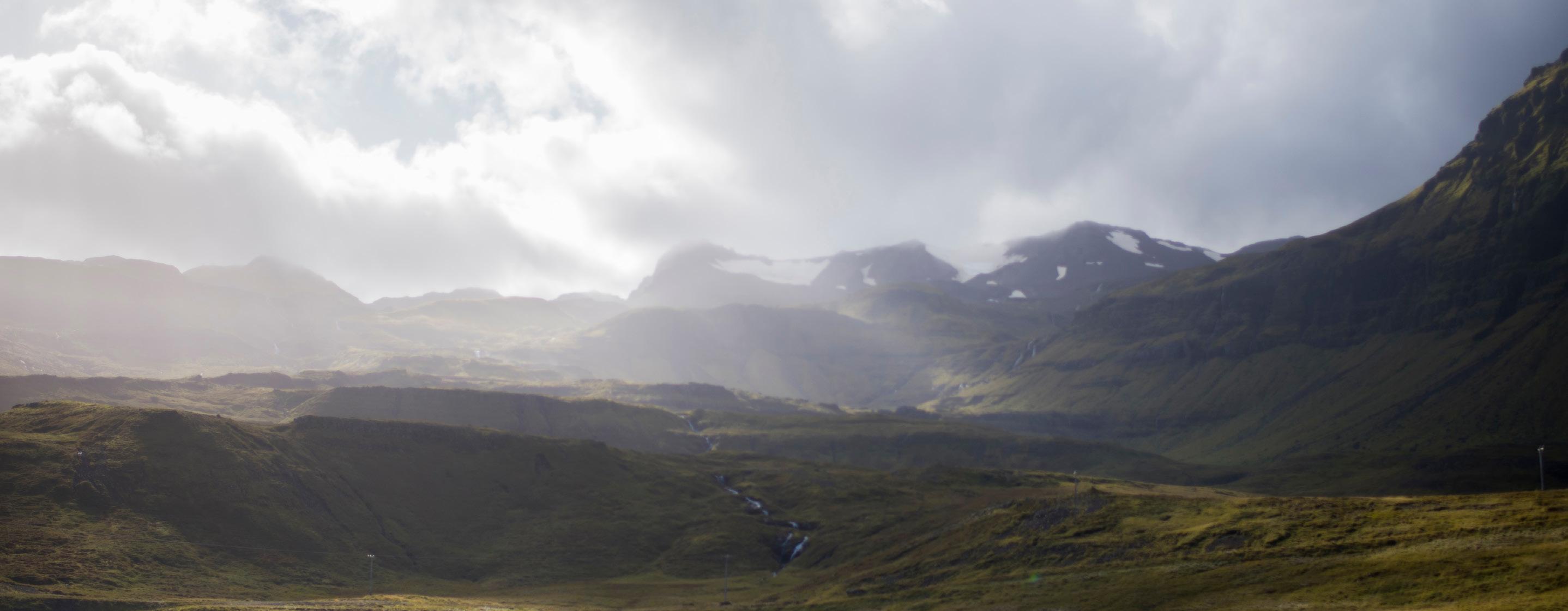
In the residential sector, data from Edufocus, who manage the EVOLVE system, shows that for the academic year 2018/19, 883,775 participants from 17,859 organisations took part in overnight residentials that included adventurous activities, an average figure of 49.5 students per organisation. In 2021/22, 774,722 participants from 17,912 organisations took part, giving a figure of 43.25 students per organisation, reflecting the post-Covid recovery. This number includes primary and secondary age (3-18) school residentials and D of E Award Expeditions and provides a reference figure rather than nuance. A more in-depth (2017) Learning Away study used EVOLVE data to estimate that 1.8m children took part in a residential every year, equivalent to 21% of the school population. On average, 2.5 residentials per year were organized by educational establishments, although analysis of associated deprivation data showed that there were fewer opportunities for those from disadvantaged areas (8). Personal development, D of E, history and geography, adventure, PSHE, and environmental themes accounted for 70% of trips and visits.
Elsewhere in the non-formal sector, the relative scale of participation through different organisations varies but collectively they have considerable reach. Member organisations of the Sail Training Association, for example, work with over 10,000 young people per year (9), while
World Challenge (10) claim over 150,000 participants on multiday overseas expeditions since 1987. Annual reports produced by the Scouts and the D of E award show significant numbers yet, along with the Girlguides and cadet organisations, a reduction in numbers that is directly attributed in all cases to the pandemic. The NCS scheme over the same period involved 92,000 young people in 2019, but data for 2021 is incomparable as no residential was offered (12). Also affected by the pandemic restrictions in the environmental sector, the Field Studies Council (FSC) worked with almost 164,000 learners in 2019, but less than half that number in 2021 (17). A further environmental benchmark is access to the JMA. Over 250,000 awards have been completed since its inception in 1997 (18), but as with other aspects of provision is in the process of rebuilding participation post-covid.
Across the wider field of OL, participation through care farms, community gardens, green care and social prescribing services also need to be accounted for. In 2017 there were 250 care farms operating in the UK, providing health, social or educational care to 8750 people per week from vulnerable groups through farming related activities, many participants referred from LA social services, carers and community mental health teams (19). Data from 2021 shows increased provision and 402 care farms and green care providers in the UK, with a further 220 estimated to be in development. 37% of care farms have seen an increase in enquiries and 29% an increase in referrals due to Covid-19 (20).
Assessing participation in the informal sector is extremely difficult. Membership numbers of organisations such as the RSPB or National Trust do not indicate activity levels. Visitor numbers provide one possible solution but collation of individual organisations’ data would require significant resources. Other data sets, such as that provided through the decade of MENE surveys (21), shed some light on participation in recreational activity outdoors, but although the data provides evidence to support the benefits of spending time outdoors, the scope of the survey means that there is little to link it with specific OL experiences. Table 1 summarises current data sets available in the public domain for 2019 (prepandemic) and 2021.
As can be seen from the variation in data sets, collating them for meaningful comparison is almost impossible. Some figures infer an OL engagement level that can be extrapolated from the data (e.g. GCSE Geography fieldwork or D of E expeditions) while others, such as the JMA can be wholly interpreted as OL. Other data, such as the numbers of

29 ISSUE 99 AUTUMN 2022 OUTDOOR LEARNING PARTICIPATION
for. To take an
entirely feasible)
person could be taking GCSE Geography which involves a residential to complete fieldwork. Outside school they are also completing their D of E Award through the Scouts, part of which includes the JMA. All D of E expeditions that are run through LA maintained schools must be approved, often through the EVOLVE system. Data is therefore at risk of being counted multiple times.
Returning to the Blagrave Report recommendation of assessing levels of provision, it is clear that no single data source can meet this need as there are numerous interpretations and participation groups. Despite these shortcomings, however, an update of Table 1 on a regular basis would be straightforward and when combined with longitudinal studies such as the ongoing Children’s People and Nature Survey would provide a high-level indication of OL access trends and the success, or otherwise, of strategies to increase participation p
REFERENCES
1. Fiennes, C., Oliver, E., Dickson, K., Escobar, D., Romans, A., & Oliver, S. (2015). The Existing Evidence-Base about the Effectiveness of Outdoor Learning. UCL Institute of Education. https:// www.outdoor-learning.org/Portals/0/IOL%20 Documents/Research/outdoor-learning-givingevidence-revised-final-report-nov-2015-etc-v21. pdf?ver=2017-03-16-110244-937
2. Mannion, G., Mattu, L., & Wilson, M. (2015). ‘Teaching, learning, and play in the outdoors: a survey of school and pre-school provision in Scotland’, Scottish Natural Heritage Commissioned Report No. 779.
3. Edufocus. (2021). Evolve visits. https://edufocus. co.uk/pages/evolve/visits.asp
4. AHOEC. (2020). AHOEC member survey. Unpublished.
5. Natural England. (2022). The Children’s People and Nature Survey for England: 2021 Update. https://www.gov.uk/government/statistics/thechildrens-people-and-nature-survey-for-england2021-update/the-childrens-people-and-naturesurvey-for-england-2021-update
6. Joint Council for Qualifications 2019. GCSE (Full Course) results 2019.
7. Joint Council for Qualifications 2019. GCE A Level Results 2019.
8. Menzies, L., Bowen-Viner, K., & Shaw, B. (2017). Learning Away: The state of school residentials in England 2017. LKMco.
9. UK Sail Training. (2011). What is Sail Training? https://uksailtraining.org.uk/
10. World Challenge. (2021). Our Story. https://weareworldchallenge.com/uk/our-story/
11. D of E. (2021). Annual statistics. https://www.dofe.org/statistics
12. NCS. (2020). NCS Key Statistics. https://wearencs.com/sites/default/files/2021-04/Participation%20 Statistics%202018-2020.pdf
13. Scouts. (2020). Annual report and financial statements 2019–20. https://prod-cms.scouts.org.uk/ media/10811/scouts-annual-report-2019-20.pdf
14. Girlguiding. (2019). Girlguiding’s Annual Report and Financial Statements 2018. https://www.girlguiding.org. uk/globalassets/docs-and-resources/quality-and-compliance/girlguiding-annual-report-2018.pdf
15. Girlguiding. (2020). Girlguiding’s Annual Report and Financial Statements 2019. https://www.girlguiding.org. uk/globalassets/docs-and-resources/quality-and-compliance/annual-report-2019.pdf
16. Ministry of Defence. (2016). MOD Sponsored Cadet Statistics. https://assets.publishing.service.gov.uk/ government/uploads/system/uploads/attachment_data/file/526131/MOD_sponsored_cadet_forces__ statistics_2016.pdf
17. FSC. (2019). Trustees’ Report and Financial Statements. https://www.field-studies-council.org/wp-content/ uploads/2020/10/2019-Reportaccounts-signed.pdf
18. John Muir Trust. (2019). Annual Report 2019. John Muir Trust.

19. Care Farming UK. (2017). Care Farming in the UK and Ireland: Annual Survey of the sector 2016/17 - Overview. Care Farming UK.
20. Social Farms and Gardens. (2022). Annual care farming and green care survey 2021: Full report. https://www. farmgarden.org.uk/sites/farmgarden.org.uk/files/annual_care_farming_and_gc_survey_2021_-_full_report_ final.pdf
20. Natural England. (2020). People’s engagement with nature, Monitor of Engagement with the Natural Environment. https://defra.maps.arcgis.com/apps/Cascade/index. html?appid=d5fe6191e3fe400189a3756ab3a4057c
IMAGES AND TABLES
Images have been sourced from pxhere.com. Photographers retain copyright. Table has been supplied by the author who retains copyright.
AHOEC Association of Heads of Outdoor Education Centres
C-PANS
People and Nature Survey
D of E
Duke of Edinburgh’s Award
FSC Field Studies Council
JMA John Muir Award
LA Local Authority
MENE Monitor of Engagement with the Natural Environment
NCS
National Citizen Service
PSHE Personal, Social and Health Education
SNH Scottish Natural Heritage
ISSUE 99 AUTUMN 2022 30
Children’s
GLOSSARY TAKING PART Find out how young people are engaging with outdoor learning from page 12. TABLE ONE: OL engagement data Source Year (1) Year (2) Notes Source (Year 2) School OL (Primary) 2015 30 minutes per week Currently Scotland only Last survey date nature scot School OL (Secondary) 2015 16 minutes per week Currently Scotland only Last survey date As above C PANS 2021 30% 8 15 year olds accessing OL provision most or every day (England) gov uk GCSE Geography 2019 265, 169 2021 281, 741 England, Wales and N Ireland JCQ A level Geography 2019 34 960 2021 35 268 England Wales and N Ireland JCQ D of E 2020 295, 490 2021 179, 241 UK award starts D of E NCS 2019/20 92, 057 2021 England only No residential in 2021 we are NCS FSC 2019 163, 907 2021 69, 505 UK Learners attending FSC courses at FSC venues Field Studies Council JMA 2019 43 287 2021 21 813 UK Personal correspondence EVOLVE 2018/19 49 5 2021/22 43 25 Average number of participants participating in residentials with adventurous activities per organization (England, Scotland, Wales) edufocus Scouts 2019 640 000 2021 362 752 UK Scouts Gir Guides 2019 460 000 2022 290 000 UK Personal correspondence with PR Office Cadet Forces 2019 128, 340 2021 120, 110 UK Includes Community Cadet Forces and Combined Cadet Forces gov uk Care Farms 2017 8 750 2021 9 536 UK Number of places per week farmgarden involved in Scouting or the NCS programme make no allowance for what experiences and opportunities are being accessed. Further, multiple engagement is not allowed
extreme (although
example, a young
AUTHOR Martin Barry

Martin Barry is an experienced outdoor educator, currently working for the Outward Bound Trust. He is in the final phase of completing his Professional Doctorate in Outdoor Leadership and Coaching and appreciates seeing where linking theory to practice can be useful, productive and enabling.
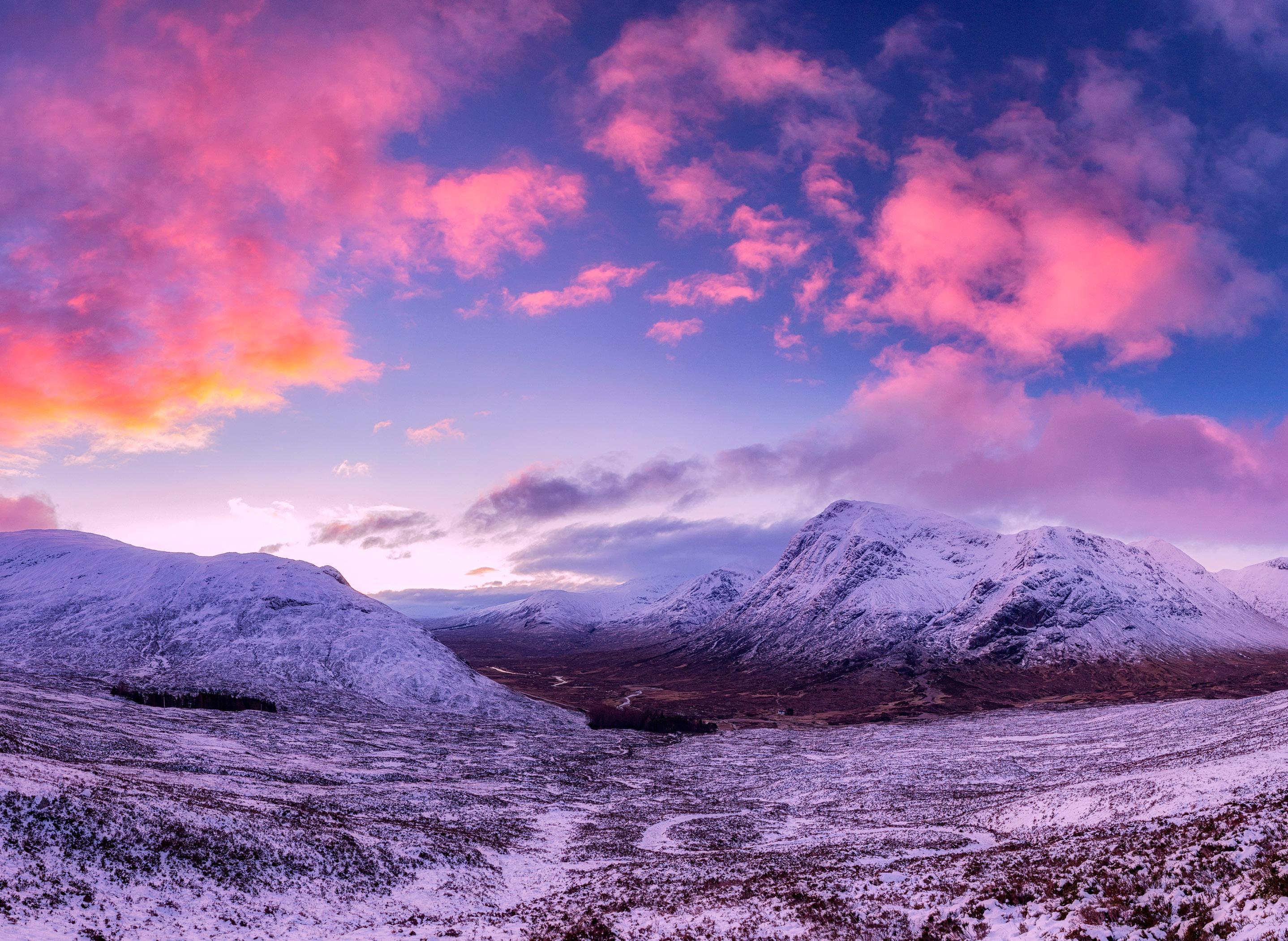

31 ISSUE 99 AUTUMN 2022
“THE ANSWER MY FRIEND... IS DANCING IN THE WIND”
CREATIVE
SOLUTIONS
TO
PRACTICAL PROBLEMS
One of the key elements of working in the outdoors as a coach, leader or outdoor educator is that the physical environment is often largely responsible for directing our decision making processes. We become accustomed to incorporating weather forecasts and expected environmental conditions into our planning and subsequent execution of adventure and outdoor education sessions, incrementally gaining experience. In reflection, we may adjust our thinking based on those experiences. The title of this article reflects a small evolution in my own thinking over many years of working as a winter mountaineering and climbing instructor in Scotland and Norway. These winter environments are ones which afford the opportunity to encounter a significant range of weather and environmental conditions (sometimes in the same day…).
Whilst working in these relatively harsh environments, it was my experience that led clients seemed able to cope with most situations that came their way, especially if advice regarding clothing and skillful movement was given at the appropriate time. This guidance was customarily in advance, but sometimes necessarily in the heat of the moment. One environmental aspect which caused me some of the greatest concern related to high wind speeds and the associated buffeting. Fundamentally, it is possible to get seriously injured in short timeframes in these conditions as a result of being blown off balance, considering the various resulting scenarios which can accompany it.
Having experienced very windy conditions whilst working with clients, I tried to work out what I did to remain stable and in balance, then compared my strategy to the movements of these less experienced or novice mountaineers. This was in order to generate advice which would help in maintaining their balance and security.
I noticed that in high wind, gusty conditions, most individuals braced themselves with their axe or ski pole, but then went off balance either when the gusts increased in speed or subsided.


I compared this to my own strategy which was to keep moving very smoothly and slowly if conditions permitted it. Essentially this ‘slow motion mountaineering’ was in an attempt to avoid ‘locking up’, although it is acknowledged that sometimes you just have to hold on and hunker down.
With regards to ‘dancing in the wind’, I conducted some simple and fun experiments whilst out on wintery mountains and the results were positive. During these ‘mini-experiments’ each person was asked to have a couple of dance moves in mind (mine was the old Saturday Night Fever stuff!) ready to deploy when gusts came along. The idea being that rather than hunker down and hold tight, if possible, to do a little dancing on the spot to see if balance was maintained. At first I informed the group when to get ready to have a bit of a dance as I heard the gusts building, but soon they were taking ownership by telling me when to strut my stuff for the necessary few seconds. It not only became a fun part of the overall mountaineering experience and something to talk about over a pint or brew later, but the movement-generated feedback which they used, enabled them to keep themselves on their feet and in balance more often than before. Off the wall but effective. The implication in practice was that the actual ‘dancing in the wind’ movements decreased over time, but served to inform each individual that to keep gently moving when possible aided in maintaining balance and security on their feet; every once in a while came the reminder “don’t forget to dance!”
With a little reading, I realised that this approach is not one which sits in isolation, although its’ application may be unusual. If this tactic is compared to other human movement patterns across activities it becomes quite revealing. For example, gymnastic movements which
ISSUE 99 AUTUMN 2022 32
employ a static element are considered incredibly difficult (holding the handstand or crucifix on the ring apparatus is a good example), as are mountain bike skills which limit movement, such as a track stand. Further, in paddlesport, keeping an active blade in the water is advantageous, in open canoeing, paddle movements such as the Indian and Canadian stroke offer feedback throughout a greater part of the stroke cycle and are very effective in windy conditions. For those who have experienced the joy of Telemark (free heel) skiing, one piece of early teaching advice is that “…there is no such thing as a Telemark traverse.” This short statement concisely delivers a coaching mantra that continual smooth movements generate feedback which can be used by the proprioceptive systems of the body to maintain posture and balance.
These thoughts resonated with the recent article of Richard Whall in Horizons 97, where he discussed bodily and spatial intelligences. The theory which was discussed related to the concept that movements generate feedback which the body is able to process and utilise to further inform the next set of movements. Therefore, in many situations, static positions are either harder to maintain or offer less useful feedback, which fundamentally applies to many sporting activities, including winter mountain walking in windy conditions…
If you are interested in the theory behind some of these thoughts, included at the end of this article are two influential and seminal references. Although it can be seen as a complex field, to start I would initially encourage the reader towards two broad schools of thought relating to motor control and skill acquisition. One is the schema theory and information processing approach (IPA) (1) which proposes that the human body acts metaphorically like a computer system which takes in information, processes it and then generates an outcome. Further, that this ‘computer’ stores a series of movement patterns (or schema) which can be accessed and subsequently deployed as required. Although a little dated, schema theory has been regarded as robust and reliable research on which other approaches have been built.
An approach which arguably better suits the active characteristics of adventure education and outdoor sports is the dynamical systems

model (2) .This theory contends that as humans we receive the feedback which allows us to work within a set of affordances (things we can do) and constraints (things we cannot do). Thus, that dynamic movement patterns generate feedback opportunities that continually further inform the process. These schools of thought are increasingly considered as complimentary and should not be considered at either end of a spectrum, rather that they allow us to begin to access and understand a relatively complex field that relates directly to professional outdoor practice.
From my own perspective, it’s about being creative and having fun whilst interrogating and solving common coaching problems. For example, I used to struggle to consistently coach the bow rudder / bow cut (choose your canoe or kayak) due to clients understanding of arm and wrist positioning. The breakthrough came in the form of slicing the blade from the stern of the boat quietly and with minimal splash to the bow whist exiting the blade at 12 o’clock then 1 o’clock etc. until holding at 2 o’clock (for example) with the blade still in the water. Look at the arm and wrist position and with minor tuning-up the bow rudder / cut position is there. Push the boat from the stern and the forces generated in the stroke can be experienced in safe parameters. This is an example similar to ‘dancing in the wind’ and one of many that are available to us. I’m an advocate of reading up a little to keep learning, offering agency to the people we work with to solve common problems together whilst enjoying the positive human interactions which the outdoors affords p
REFERENCES
1. Schmidt, R. A., & Wrisberg, C. A. (2008). Motor learning and performance: A situation-based learning approach. Human Kinetics.
2. Davids, K., Button, C., & Bennett, S. J. (2008). Dynamics of Skill Acquisition: A Constraints-Led Approach. International Journal of Sports Science and Coaching, 3(1), 147–151.
IMAGES
Images 1 has been sourced from pxhere.com. Images 2 and 3 and profile image have been supplied by the author. Photographers retain copyright.

33 ISSUE 99 AUTUMN 2022
DECISION TIME

 AUTHOR Loel Collins
AUTHOR Loel Collins
With over 35 years experience in the Outdoor sector, Loel is a Lecturer in Sports Coaching at the University of Edinburgh. He is also a senior coach developer with Greymatters Performance Ltd UK. His doctorate and research interests lie in judgement and decision-making in complex environments. Email at: Loel.Collins2@gmail.com

ISSUE 99 AUTUMN 2022 34
DEVELOPING PROFESSIONAL JUDGEMENT AND DECISION-MAKING
Following on from ‘Synergising Skills: Developing Good Judgement and Decision Making.’ (Horizons 91) and the earlier articles in this series. This article, the first of two, outlines an approach that aims to develop decision-making in inexperienced instructors by developing the attention they pay to their environment and group. Following a brief recap and update of professional judgement and decision making, this article outlines an approach that encourages instructors to develop a ‘descriptive habit’, an approach that encourages greater attention to the context of their instruction and needs of their group.
Professional judgement and decision making is an area of research that has received considerable interest over the last ten years. Much of what we understand about professional judgement and decision making in complex environments has come from research in our sector (1). Professional judgement and decision is a high-level decisionmaking process that combines two types of decision making (2); the first a classic part, a deliberate, analytical, logical, thought through, and considered process. This aspect of the process is predominant in presession planning, organisation and post-session review. The second, a naturalistic element that has evolved to simplify complex situations into patterns and rules of thumb. This aspect works well in simple tasks, but is bias if an instructor’s experience is limited or narrow; these naturalistic calls are the intuitive or ‘gut feel’ calls we make in the field. However, in complex tasks, these naturalistic aspects become very demanding due to time pressures and incomplete information (3). The balance of classic to naturalistic elements depends on the setting of the decision. Consequently, understanding the context of any decision, otherwise known as situational awareness, is critical.
Situational awareness is an important concept in understanding decision making with a large amount of research conducted in aviation, the military, emergency response, and the adventure and outdoor sectors. Situational awareness and the demands it places on the instructor’s decisions are an important part of how instructors use information, from and about their environment and group and integrate into their decisionmaking. Situational awareness is the comprehension of a dynamic situation, what causes a given situation and how it effects an activity. There are three ‘levels’ of situational awareness: perception (an ability to perceive the relevant information in a given setting and knowing what to look for); comprehension (an understanding of what has caused the situation); and projection (the ability to forecast what will happen in the future situation, how the environment will change and how a student may develop given the tuition).
So a final decision on a particular course of action depends on the environment, the group and intentions for a session. In particular, the instructor needs to know when what they had planned is appropriate or not and have the ability to create or adapt their actions.
Historically, we have assumed that the ability to be able ‘to do the right thing in the right place at the right time with the right people’ (5) naturally develops as an instructor gains experience. When instructors have demonstrated poor judgement, there is an assumption that they require more knowledge gained from more experience. However, just having the same experience repeatedly gives poor-quality experience which lacks breadth and depth. Leaving decision-making to develop in this ad-hoc way is unwise and leads to a spiral of increasing logbook requirements that ultimately becomes impossible to manage (6). A growing body of evidence demonstrates that we can facilitate the development of effective decision-making by enhancing an instructor’s situational awareness.
DEVELOPING SITUATIONAL AWARENESS

Fostering a habit of active looking
This approach builds on the three levels (description, comprehension and projection) of situational awareness mentioned earlier. The aim of this technique is to encourage the instructor to develop a solid description of their environment, group and what they are trying to achieve in a session. The description needs to be of a real session, allowing the mentor to work with the trainee and provide practical examples in their very recent experiences. The trainee is encouraged to listen actively to the description to understand the mentor’s description, both its characteristics and content. The mentor and trainee discuss and jointly agree on this as a projection level of description because of its characteristics and content. For the mentor, “this is a projection level description because…”. This process can be repeated or revisited throughout the trainee’s development, as groups change, as seasons change, for new activities or environments. Once the mentor is confident that the trainee understands what a projection level description is, the role then shifts; the trainee leads the sessions from this point, but this time, the mentor and trainee jointly describe the session; the trainee is initially led by the mentor, who
35 ISSUE 99 AUTUMN 2022
Naturalistic decision making Classic decision making Pre session planning (greater classic decision making) In Session (greater naturalistic decision making) Post session review (greater classic decision making) Venue choicewhich lake? Did that session achieve its aims? Activity at the venue which side of the lake? Activity at the venue - how best to get the pairs working together
Description Level Comprehension Level
Major factors are described accurately, sequentially, and chronologically

The description is from a single perspective
All aspects are given equal weighting
There are some direct links to the instructors’ recent experiences
Information sources are not questioned
This description has greater detail and depth than the description level
Associations are starting to be made with other factors and experiences
There is some weighting given to key factors and alternatives are considered
There is a degree of overview
A recognition that greater situational comprehension may be required
Recognition of complexity and relationships
Projection Level
Priority is placed on key factors
Key elements are prioritised based on experience
The description may not be sequential; working back and forth while also highlighting the connections between the aspects of the session
Some factors are acted on, some stored for later, or even ignored
Cyclical consideration and reconsideration of relationships between factors the descriptive process stimulates more consideration and is therefore open ended
Different perspectives are taken
Alternative implications are explored for immediate and future practice
adds the aspects required to make it a ‘projection’ level description, filling the gaps in the trainee’s perception of the situation. In the initial sessions in this stage, the mentor will be adding a great deal, highlighting the missing characteristics, links between different aspects and examples in the session and environment. As further sessions happen, over a period of time, the roles and balance in the description gradually shift until the trainee can describe, without prompting, their sessions at a projection level. The aim is to facilitate the trainee’s progression by improving their perception of the session, the environment and the group. The objective is to have the trainee describe their sessions consistently at the projection level by the end of the process, which will take multiple sessions and require practice. The mentor provides scaffolded support for the trainee by mentoring and coaching the them to create detailed, deep and accurate projection level descriptions of their sessions - in order to do this they will need to pay full attention to their environment and group.
Feedback from mentors using this approach has identified several key points that aid in this approach.
Firstly, the trainee needs some experience of instructing; complete novices struggle if they have zero understanding of being with groups outdoors or have not previously experienced good teaching. These experiences provide the foundation needed to build on. This was described by one mentor as ‘the hooks to hang their jackets on’. A National Governing Body introductory award helps and can provide a baseline competency, but frequently lacks the bigger picture.
Secondly, the skills of being situationally aware are transferable between sessions, i.e. climbing to canoeing. This can be contextual - between sailing and kayaking in the sea (e.g. knowing what to look for in the maritime domain) or can be between kayaking to canoeing because the activities are similar. In both cases, the development of situational awareness is rapid, because the trainee has the descriptive habit skills - they learn to be situationally aware in their other sessions more easily.
Thirdly, instructors with good personal experience in the activities may already have a good awareness of the environment but may lack an understanding of the demands a group brings. And finally, when done well at projection levels, the description process becomes a reflective process in itself.
There are several key take homes from this approach, including: safe and effective instructor decisions come from good situational awareness; developing good situational awareness can be developed through a structured progression that supports the instructor paying greater attention to their environment and group; the descriptive habit is one way this can be achieved.
In the next issue of Horizons, I will examines a great way of developing effective decision. The article will examine the ‘big 5’ questions and how they can be used to improve decision making for instructors. Based on work with over 100 outdoor instructors over the last tens years, this approach is effective and easy to use as a mentor, trainer or even for yourself p
REFERENCES
1. Collins, L., & Collins, D. (2016). Professional judgement and decision-making in the planning process of high-level adventure sports coaching practice. Journal of Adventure Education and Outdoor Learning, 16(3), 256-268.
2. Collins, L., & Collins, D. (2014). Integration of In-Action Reflective Practice as a Component of Professional Judgment and Decision Making in High Level Adventure Sports Coaching Practice. Journal of Sports Science.
3. Collins, L., & Collins, D. (2016). The foci of in-action professional judgement and decision-making in high-level adventure sports coaching practice. Journal of Adventure Education and Outdoor Learning, 17(2), 122-132.
4. Triantaphyllou, E., & Mann, S. H. (1989). An examination of the effectiveness of multi-dimensional decision-making methods: A decision-making paradox. Decision Support Systems, 5(3), 303-312.
5. Mees, A., & Collins, L. (2022). Doing the right thing, in the right place, with the right people, at the right time; a study of the development of judgment and decision making in mid-career outdoor instructors. Journal of Adventure Education and Outdoor Learning, 1-17.
6. Webb, D. J., McElligott, S., & Collins, L. (2021). Key characteristics of optimal developmental experiences in a group of expert Sea Kayak Guides. Journal of Adventure Education and Outdoor Learning, 1-16.
IMAGES, FIGURES AND TABLES
Image 1 has been sourced from pxhere.com. Photographers retain copyright. Figure 1, table 1 and profile image have been supplied by the author. Author retains copyright of table and figure.
ISSUE 99 AUTUMN 2022 36
NOTES



COLOURS OF AUTUMN
Welcome to my nature notes for autumn with a particular focus on plants of seasonal interest and my tips for identifying and gardening with wild birds. I also want to share outdoor learning activities that can be provided in a woodland setting and describe a wildlife project to make space for in sects in your garden, park or green space.

honeysuckle

PLANT SPOTTING
LUSCIOUS WOODBINE
This climbing plant, usually found in woodland and hedgerows, is an invaluable addition to a planting list for any wildlife garden. Its flowers open at twilight and it produces the most scent at night so that it attracts moths that feed on its nectar and pollinate the flowers. The leaves are the food plant for the caterpillar of the aptlynamed Honeysuckle Moth (Ypsolopha dentella) and arboreal small mammals like dormice eat its flowers too. The creamy-white flowers turn yellow on pollination and the plant produces small clusters of bright red berries. (1)
Culturally, honeysuckle is the County Flower of Warwickshire and in the language of flowers it is believed to symbolise constancy, devotion, domestic happiness and fraternal love. Honeysuckle is the ‘luscious woodbine’ as described by Puck in A Midsummer Night’s Dream and its most common vernacular name is Woodbine. It has long been favoured as a climber for arbours in English gardens and its habit of twisting round hazel and ash produces sought after ‘barley-sugar walking sticks’, once popular with Scots music-hall performers. (2)
hornet on ivy flower

ENTWINING IVY
A significantly underrated and often misunderstood plant, common ivy (Hedera helix) is one of my top plants for a wildlife garden. This native evergreen plant is also usually regarded as a climber but will happily trail across a woodland floor until it can climb up a tree, rock face or masonry. Ivy has the ability to link tree to tree in woodland, form dense thickets, provide shelter for wildlife or create overwhelming darkness. The flowers of the ivy are the last main nectar source for bees, wasps, hornets, hoverflies and other insects that need to stock up on energy reserves to over-winter in a sheltered spot. Once pollinated, ivy produces clusters of black berries.
AUTHOR Paul Ritchie, Sorbus Learning CIC
Paul is a biologist with a passion for Outdoor Learning and teaching local communities, voluntary groups and others about ecology, conservation and wildlife gardening through courses, workshops and talks. As Director and project leader of a small not-for-profit Community Interest Company (CIC) he promotes understanding of our natural world. https://sorbuslearning.co.uk/
For the ancient Celts, ivy represented Gort the 11th consonant of their Ogham Alphabet and the 11th month (30 September to 27 October) of their Tree calendar. It was a symbol of their White Goddess Arianrhod. Ivy was considered to have mystical associations with female principles of life and the Ivy Girl and Holly Boy were an important part of the midwinter Yule festivals of ancient Britain. Ivy has expectorant, anti-spasmodic and cardiac actions and in the past was used to treat rheumatic pain and respiratory disease. In modern medicine it is being used as an antibiotic. (3)

37 ISSUE 99 AUTUMN 2022
NATURE
WILDLIFE TIPS FOR CENTRES, SCHOOLS, PARKS AND GARDENS
BIRDWATCHING
GOLDFINCH

This is a small active and colourful finch with distinctive red, white and black markings on its head and golden-yellow bar on its wing. Goldfinch are usually seen in small flocks called ‘charms’ and they will frequent gardens looking seeds from tall plants such as teasel, thistle, ragwort and burdock. Their long bills and acrobatic skills allow them to exploit the seeds remaining on these plant species during autumn months (4).

I find the regional old common names of animals and plants fascinat ing and the goldfinch does not disappoint with jack nicker (Cheshire), moleneck (Cornwall), spotted dick (Shropshire), proud tailor (Derby shire) and Harry redcap (Suffolk) to name a few. Sadly this beautiful little finch was once a popular cage bird in Britain with over 132,000 caught each year in the 19th century. (5)
goldfinch


waxwing
WAXWING

After considering a resident finch with a splendid song we move to a remarkably silent bird from the Arctic that visits Britain during au tumn and winter. This small, crested bird is mainly chestnut brown, with a paler pink-brown breast, a grey rump and yellow, white and red flashes on its wings. They are known to form large acrobatic flocks that frequent parks and gardens to feed on ornamental fruit trees. In residential gardens they favour berries of rowan, hawthorn and cotoneaster. (6)

ISSUE 99 AUTUMN 2022 38
MAKING PALLET COMPOST BINS
As an avid wildlife gardener and outdoor learning instructor teaching countryside skills as part of a grant-funded green social prescribing project, the decision to make compost bins is a given. Why wouldn’t you want to transform garden and food waste into rich compost to use on the allotment while offering a brilliant and warm habitat for slow worms and other mini-beasts. With a ready local supply of waste pallets and a sustainability policy statement the choice of building materials was also predetermined. I’ve found these are great features to teach basic carpentry skills. (7)
HOW TO MAKE A PALLET COMPOST BIN
There are lots of videos on YouTube about how to make a compost bin, but here are a few tips to help you on the way:
Find six (6) pallets same size & similar design
Check they have been heat-treated not chemical (look for ISPM15 mark)
Find a flat area that is easy to access for loading and unloading your compost
Consider using a waste plastic sheet, old compost bags or weed matting to line





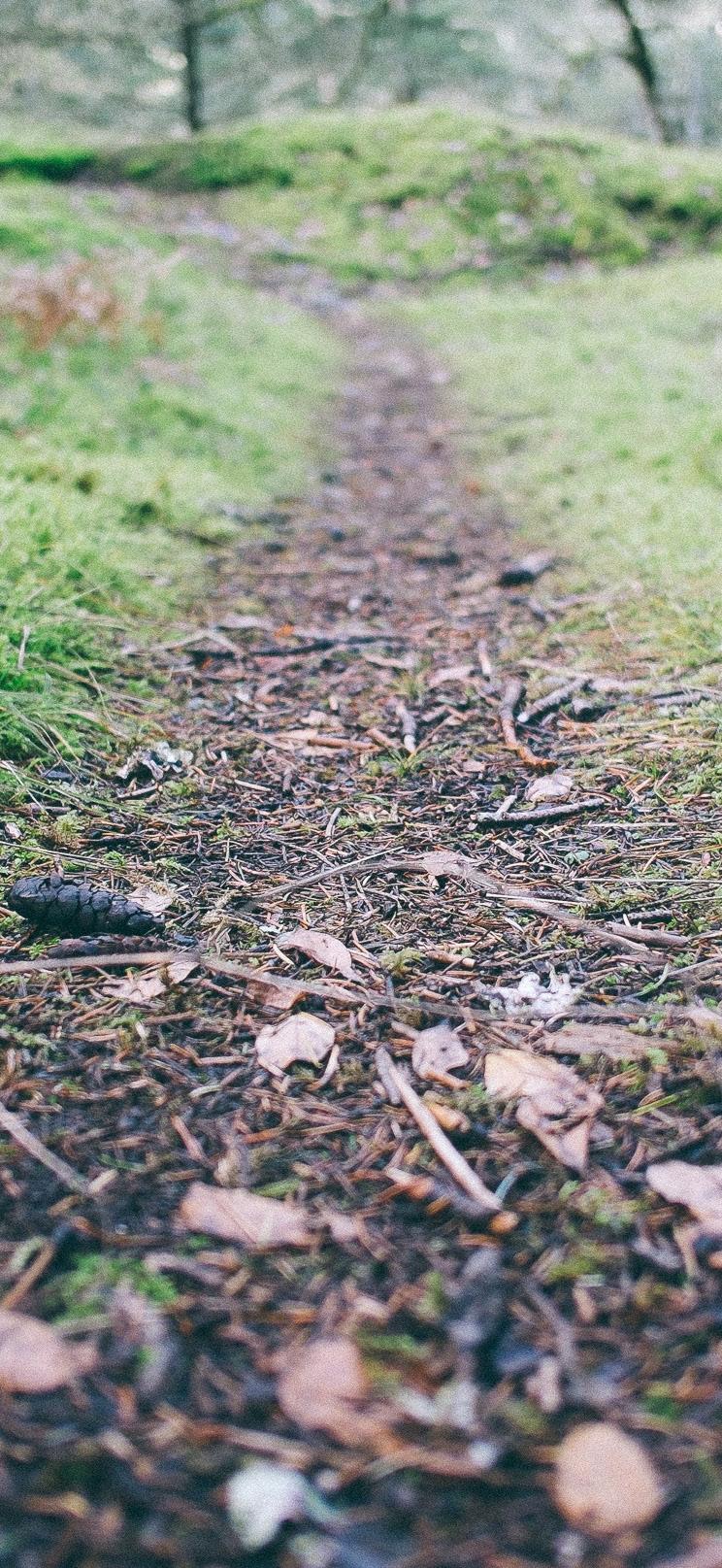

Build one bin first with two sides, a back and half-pallet front – add the other bin to it
Screw bottom corner of one side to back, then top & work round joining to make it square
Line sides and back before fitting front
To build a compost bin the only tools you will need are a carpentry saw, screws and driver or nails and hammer and a staple gun for fitting liner.
39 ISSUE 99 AUTUMN 2022 COLOURS OF AUTUMN
the finished product! Have a plan - a cup of tea alwayshelps too! Each bin needs 3.5 pallets andplastic liner Job done and ready for plantwaste!
LEARNING TO RELAX
An alternative way to view my theme of ‘learning to relax outdoors’ is perhaps to ‘relax through outdoor learning’ and this is definitely the approach we are applying with Surrey Care Trust at their Gateway Allotment Project in Redhill, Surrey. As part of a green social prescribing programme that is funded by Surrey Heartlands Nature Connection Fund, we have moved onto teaching countryside skills and traditional rural crafts with a modern spin.
We have provided woodland craft courses such as whittling, knot tying, shelter building and fire-lighting. Some clients have carved small dibbers, willow and hazel sticks for planting seeds and bulbs on the allotment, whilst others have hewn simple mallets from birch logs. This activity enables us to teach tool safety with knives and saws whilst encouraging a social activity facilitated by a portable fire pit and a Kelly kettle for brewing teas and coffee.
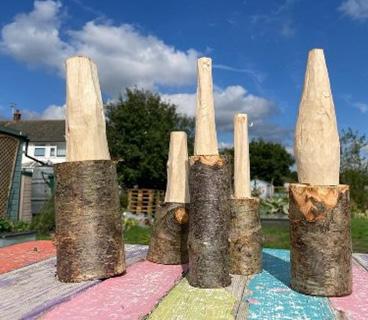
For other clients we are providing arts and craft activities that are inspired by nature, which so far has included stone painting with insect designs, embossing air-drying clay tablets with plant patterns and painting dried leaves. Despite the awful summer heatwave, the Surrey Care Trust team at New Pond Farm allotments has been able to celebrate the success of clients learning how to grow fruit and vegetables, which they can take home (8) p


REFERENCES
1. Plantlife. (2022). Plant & fungi species. https://www. plantlife.org.uk/uk/discover-wild-plants-nature/plant-fungispecies
2. Mabey, R. (1996). Flora Britannica. Sinclair Stevenson.
3. Gifford, J. (2000). The Celtic Wisdom of Trees. Godsfield Press.
4. Holden, P., & Abbott, G. (2008). RSPB handbook of Garden Wildlife. Bloomsbury Publishing PLC.
5. Buczacki, S. (2002). Fauna Britannica. Sinclair Stevenson.
6. RSPB. (2022). Identify a bird. https://www.rspb.org.uk/ birds-and-wildlife/wildlife-guides/identify-a-bird/

7. Gardeners World. (2021). How to build a compost bin. https://www.gardenersworld.com/how-to/diy/how-tobuild-a-compost-bin/



8. Sorbus Learning CIC. (2022). Gateway community learning project 2022. https://sorbuslearning.co.uk/ community-learning
IMAGES
Banner image was sourced at pxhere.com. All other images were supplied by the author. Photographers retain copyright.

ARE WE WATCHING NATURE?
Head over to page page 23 for a rethink on how we conceptualise ‘nature’.
ISSUE 99 AUTUMN 2022 40 HOWTO
VIEWPOINT
PRINT OR DIGITAL?
Whilst working as the CEO of IOL, Jo also managers Telford & Wrekin Council’s Outdoor Education Service. A key interest for Jo is promoting sustainable practice in the outdoors and through outdoor learning. Look out for the webinar to chat with Jo on Tuesday evening, 13th December.
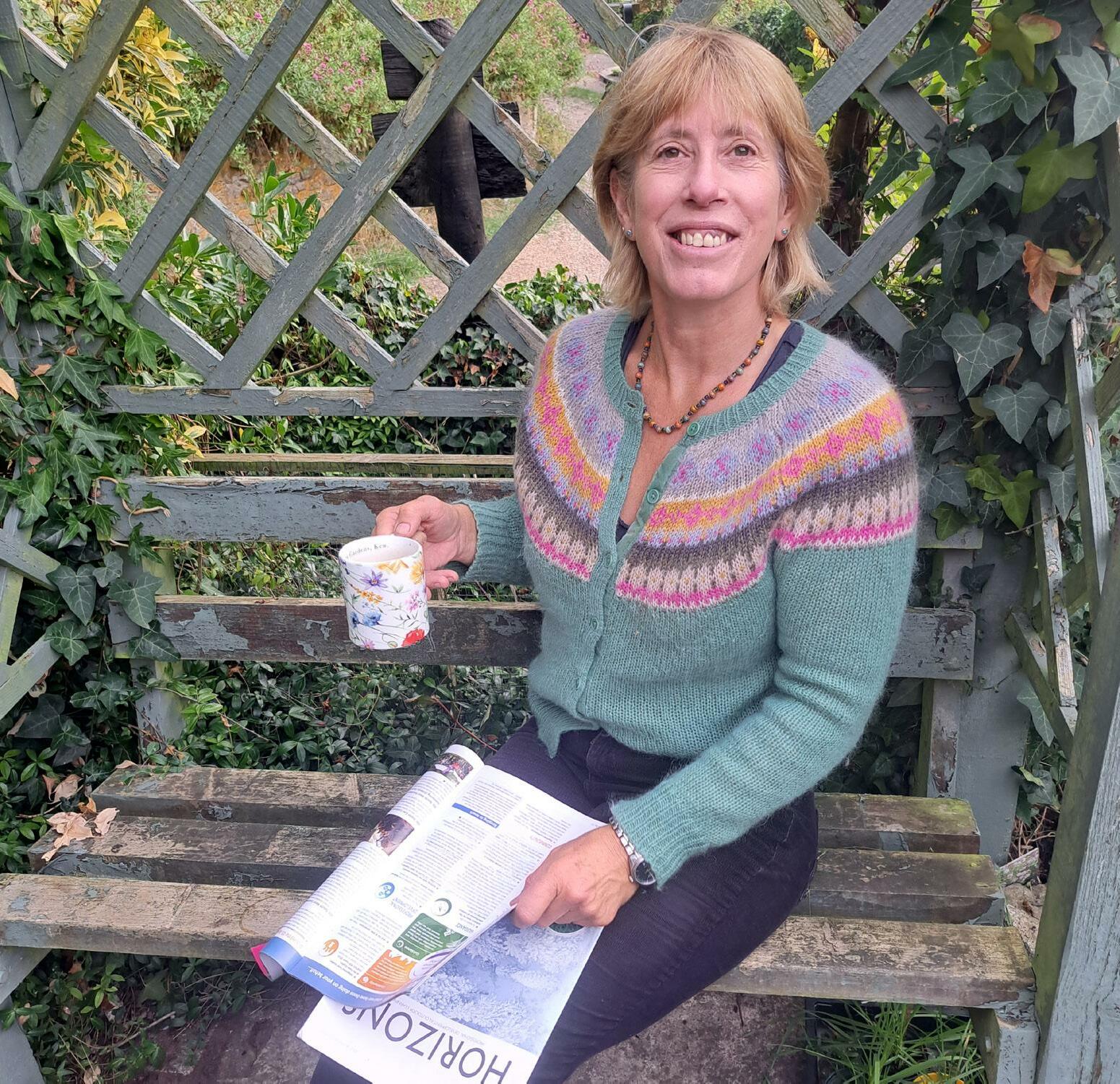
Matt Healey
Matt is based in the Centre for Global Eco-Innovation (Eco-I) at Lancaster University. Embedded in the interdisciplinary field of ‘Market Studies’ his current research unpacks how outdoor learning organisations that create value from so-called ‘natural capital’ mobilise new ecological strategies.
Richard Retallick
IOL Business and Operations Manager, Richard has a degree in Business Administration and worked in outdoor centre management for more than 20 years before taking on his current position with the Institute for Outdoor Learning.
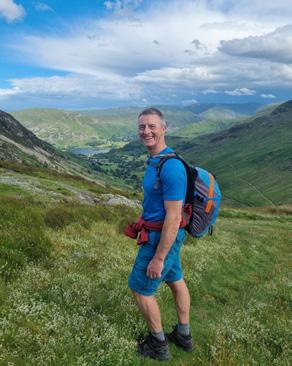


THIS ISSUE, WE EXPLORE THE BIG DEBATE ON THE FUTURE OF HORIZONS: PRINTBASED MAGAZINE, OR DIGITAL PAGETURNER?
HAVE YOUR SAY ON THE FUTURE OF HORIZONS! CLICK HERE TO LET US KNOW WHAT YOU WANT TO SEE MOVING FORWARDS.
In this latest Viewpoint, we ask Jo Barnett, Matt Healey and Richard Retallik for their views on the future of Horizons: bring the print run back?; stick to digital?; a bit of both?

JO: As soon as I started in my new role, the most common thing said to me is ‘Will you bring back the Horizons magazine?’ - meaning the printed paper copy. It seems that members of our community enjoyed flicking through Horizons in the staff room and discussing articles, picking it up to take outside to read with a cup of coffee, keeping copies for future reference, and even to proudly share if they appeared ‘in print’ themselves. It seems the printed Horizons was a physical expression of the IOL, something tangible to hold, easy on the eye and it landed with satisfying regularity through the post. I have to admit I share this view – I spend long enough on a screen to enjoy the novelty and respite of paper print. I know it has a cost – financially and environmentally – but if this means Horizons reaches more people (members and beyond), and in a meaningful way, then I think this is a worthwhile use of resources.’
MATT: Comparisons of the relative benefits of paper-based media and digital media normally confine themselves to the ‘dead tree format’ - deforestation, energy consumption, pollution and waste. But what we now know about are the social and environmental costs of mining rare metals to equip digital devices, the vast energy consumption of server farms and the never realised ideal of the paperless office. This brings a normalised view of ‘bad’ paper and ‘good’ digital into more critical focus. Reading habits also have a marked impact on the relative cost/benefit of paper and digital. ‘Snacking’ (under 10 mins per day) on information presented digitally is cost-effective for the environment, whereas deeper reading habits are more sustainable through print. Young people in the UK prefer to read on paper derived media, and we learn better through the broader sensory involvement that print media provides. Print media is a ‘socially sustainable’ medium that is particularly impactful when communicating complex concepts, such as environmental sustainability. Furthermore, the production and consumption of relevant news is an act of citizenship, including re-using and recycling. Interestingly, the users of Horizons magazine are also the producers. So, by democratically blurring the boundaries of what constitutes ‘the audience’ in journalistic terms with an editorial institution concerned with maintaining professional standards, Horizons acts as an agenda setting, ambassadorial bundle for our field. It also maintains ‘teamwork’ opportunities for practitioners.
41 ISSUE 99 AUTUMN 2022
Jo Barnett
VIEWPOINTS
HAVE YOUR SAY IN VIEWPOINTS
Every issue we ask readers a question about what’s happening in the sector.

RICHARD: As soon as I started in my new role, the most common thing said to me was ‘Will you bring back a printed Horizons magazine?’, to which I would say ‘ I preferred the printed version too. I will look into it’. So I looked into it. It would cost about £14,000 per year extra to print, which would add quite a lot to our members fees. We currently have about 1,500 members. There are also discussions around the environmental impact of printing and delivering a magazine versus an electronically delivered ‘page turner’; about the breadth of readership (how many people read the printed version over the electronic version); how often it is read and read again. But I think there may be a wider discussion around how we engage with news and media now. When I managed a centre I always used to put Horizons on the coffee table and observe that it never moved! I even tried leaving it open on particular articles. Still it never moved! When Horizons moved to the digital sphere I took to printing out odd articles I thought might be of interest and pinning them to the notice board. I am still not convinced anyone read it! I always read the printed copy cover to cover then it went electronic and I said I would still read it but invariably I never did. Maybe because it wasn’t there staring at me reminding me to read it every time I had a coffee.

JO: I have to admit, I firmly agree with those who want Horizons to return to print – I spend long enough on a screen to enjoy the novelty and respite of paper print. I know it has a cost – financially and environmentally – but if this means Horizons reaches more people (members and beyond), and in a meaningful way, then I think this is a worthwhile use of resources.
MATT: I support the argument for a paper-based Horizons but combined with a healthy and creative digital continuity. Digital moves in a faster, liquid sense that simultaneously resists depth. This hybrid media offering equals a healthier media ecology, simultaneously stimulating critical debate whilst remaining anchored to a clear and thoughtful agenda. I therefore argue that a paper-based Horizons magazine linked to a digital media network will do the most to protect us from the combined negative effects carbon-dioxide and ‘jargon-dioxide’.
I regularly use mainstream media mobile apps. Those apps are not trying to be a paper or to be a TV or Radio programme. They are trying to get their stories across and read by as many people as possible. People seem to engage with social media for hours. Maybe the discussion shouldn’t be about paper versus digital; maybe we should be asking how do we engage with our membership and the wider outdoor learning community so that they, in turn, engage with us p
We want to hear from you! We’re looking to the future of Horizons and we want to produce a magazine which reflects the evolving needs of the Outdoor Learning sector. There are lots of factors affecting the future of Horizons - the print vs. digital debate being one - and we want the IOL membership to tell us how we can best serve the sector. Click the link provided to complete our membership survey.
Get in touch with the Editor if you have a question you think we should ask readeers, or if you’d like to get next issue’s question straight to your inbox.
RICHARD: Electronic media seems to engage everyone for hours. It is always in our pocket. We can pick it up for just a few moments at a time. Scan many things that aren’t relevant or interesting before engaging with the ones that are. So maybe a focus on how Horizons is presented digitally is significant. The ‘page turner’ does its job well, but is basically trying to put Horizons magazine into our phones. It is not looking at the best way to present the messages within that magazine.
VIEWPOINT BY: JO BARNETT, MATT HEALEY AND RICHARD RETALLICK
IMAGES
Image 2 was source from pxhere.com. Image 1 and profile images were supplied by the authors. Photographers retain copyright.
CLICK TO FILL OUT OUR MEMBERSHIP SURVEY!
ISSUE 99 AUTUMN 2022 42
PPE Inspection Courses
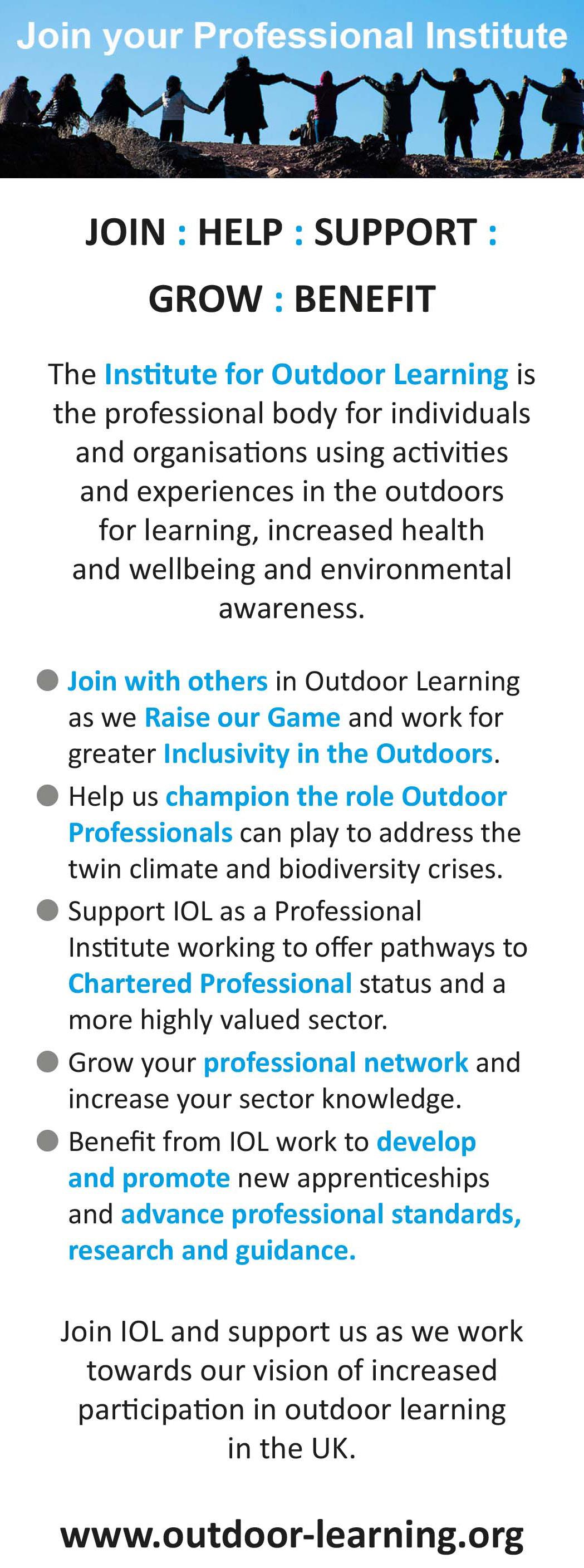







Lyon Equipment provide equipment inspection courses specifically for the Adventure Activities sector W&R@lyon.co.uk +44(0)15396 24040 lyon.co.uk • Develop current knowledge, learn up-to-date inspection and maintenance techniques. • Covers equipment for mountaineering, climbing, caving and water activities. • Gain an understanding of the effects of wear and damage on lifetime, strength, function and continued use. • Counts towards CPD points for AMI & MTA members. Half-page - TRAINING PPE Inspection.indd 1 28/04/2022 09:25:33
MEMBERS-ONLY

IN OUTDOOR

FOR ALL


IOL KNOWLEDGE BASE The IOL Knowledge Base builds on the very successful member-tomember webinars offered during the COVID-19 pandemic and will be a place to share knowledge, presentations and links on all aspects of Outdoor Learning provision. It will be particularly helpful to students, apprentices, and members completing RPIOL, APIOL or LPIOL Awards. Here is a our starting point. How the Knowledge Base develops will be shaped by what you, our members, find most valuable. PROFESSIONAL PRACTICE > IOL Code of Professional Conduct > 7 Steps to CPD > Outdoor First Aid Training > Duty of Care, DBS, Safeguarding > Educare CPD Training Offer OUTDOOR LEADERSHIP > Risks and benefits webpage and links > Occupational Standards EXPERIENCE AND JUDGEMENT > Adventure Activity Information Log > Professional Recognition > PP1 Reflective Practice RESEARCH AND REPORTS > Supporting evidence and research papers > High Quality Outdoor Learning > Regional Research Hubs ENVIRONMENTAL KNOWLEDGE > IOL Climate Change Position Statement > Respect, Protect, Enjoy: The Countryside Code FACILITATING LEARNING > FL1 Theory of Change > Outdoor Therapy Statement of Good Practice > National Outdoor Learning Award > High Quality Outdoor Learning > Teaching Outdoors webpage and links ACTIVITY SKILLS AND COACHING > Governing and Awarding Bodies > IOL Bushcraft Professional Practice Group > IOL Field Studies Professional Practice Group EQUALITY, DIVERSITY, INCLUSION > Equality, Diversity and Inclusion webpage and links > LGBT+ Rights > IOL Adventure for All Professional Practice Group To contribute a link or article, or to request resources in a particular area, please email: institute@outdoor-learning.org To visit the Knowledge Base go to the IOL website: www.outdoor-learning.org where IOL members can log in for immediate access. Or, visit the website to learn more about the benefits of becoming an IOL member. A
RESOURCE
PROFESSIONALS
LEARNING





















 By Luke Blackham
By Luke Blackham







































































































